|
Here are some links to free stuff on vision from me. Feel free to share with others.
Vision Exercises online from Kimberly Burnham, PhD (Integrative Medicine) See Faster, Vision Exercises for Basketball Players https://amzn.to/3F7HyQd Exercises specifically for basketball players but beneficial for anyone. Speaking at Raising Consciousness Conference on vision https://www.youtube.com/watch?v=JhG3-qwkvVk Blinking Exercise https://healthy-brain.medium.com/natural-vision-solutions-and-seeing-beauty-in-the-world-ab7a54d612af and https://healthy-brain.medium.com/blinking-your-way-to-a-brighter-future-ec2ba662f62d Peripheral vision exercises https://medium.com/@healthy-brain/speed-up-peripheral-vision-build-white-matter-d84adfce75ff Articles on Color therapy and Vision https://akamaiuniversity.academia.edu/KimberlyBurnham https://scholar.google.com/citations?user=EI24aaoAAAAJ&hl=en Neurofascial Process including vision and eyes. http://oppt.com/wp-content/uploads/2013/01/7-01CNeurofascialProcessMar2007.pdf Article with NLP vision exercise. https://www.oatext.com/using-eye-muscles-to-recover-visual-function-memory-skills-and-the-ability-to-visualize-a-review-of-superior-rectus.php My own vision recovery story https://www.youtube.com/watch?v=tibuBh56QsA Share this Post then Call and Leave a phone message for a free 20 minute vision consultation Kimberly Burnham, PhD (Integrative Medicine) 860-221-8510 PST Spokane, Washington Email [email protected] https://www.linkedin.com/in/kimberlyburnham/ Clinical consultations, presentations, self-care coaching http://NerveWhisperer.Solutions
0 Comments
Writing About Stressful Events Doesn't Impair Working Memory
"Acute stress impairs working memory (i.e., the ability to update and keep information in mind). Although that effect is well established, the boundaries around it are not. In particular, little is known about how recalling an unresolved stressor might influence working memory, or about how stress-or recalling a stressful event-influences the processes underlying working memory task performance (e.g., sustained/controlled attention vs. capacity). We addressed these issues in the present study (N = 171) by randomly assigning participants to write about an unresolved, extremely stressful experience (stressful writing condition; n = 85) or the events of the prior day (control condition; n = 86), and, subsequently, both measured change detection task performance and used computational cognitive modeling to estimate the processes underlying it-namely, attention, capacity, and bias. We found that, relative to the control task, writing about a stressful experience neither impaired performance on the change detection task nor altered any of the processes underlying performance on that task. These results show that the effects of writing about an unresolved, stressful episode do not parallel effects of acute stress on working memory, indicating that experiencing a stressor may have very different cognitive effects than recalling it at a later time." Shields, G. S., et al. (2020). "Feel free to write this down: Writing about a stressful experience does not impair change detection task performance." Emotion 20(2): 317-322.
Write Your Memoir Today
2020 Currently working with clients as a Health and Vision, and Writing Coach.
For an appointment contact Kimberly Burnham, PhD (Integrative Medicine) at [email protected]
Kimberly Burnham's Publication Credits
Web Content Manager / Editor
2017-2018 Content Manager, Writer, Editor for Insights Into Religion by the Non-Profit Lilly Endowment (2 years) News, Non-Profit, Religion, Sermon Resources. http://www.religioninsights.org
Blogger
Raising Consciousness Now Blog (2013-Present) Brain Health, Consciousness, Peace, Language, Mental Health. https://www.raisingconsciousnessnow.com/blog/author/Kimberly-Burnham%2C-PhD-(Integrative-Medicine) SpokaneFavs Blog. (2014-Present) Intersection of Health, Religion and Peace Initiatives. https://spokanefavs.com/author/kimberlyburnham/ Second Nexus (2017) News, Science, Health, Food, Travel. https://secondnexus.com/author/kim-burnham/ 5 Best News and Entertainment Blog. (2017-2018) Health, News, Food. https://5bestthings.com/author/kimberly/ Kimberly Burnham's Column on LinkedIn Pulse (2010-Present) 12,000 + followers https://www.linkedin.com/in/kimberlyburnham/detail/recent-activity/posts/ A Selfish Poet, Trish Hopkinson's Blog, Making Money for Poets. (2017-Present) Poetry, Brain Health, Language, Peace. https://trishhopkinson.com/tag/kimberly-burnham/ Sivana Spirit Blog. (2018-Present) Health, Alternative Medicine. https://blog.sivanaspirit.com/author/kimberly-burnham/ Reform Judaism (2017-Present) Judaism, Jewish Themes, Jewish Books and Essays. https://reformjudaism.org/blog/blog-author/kimberly-burnham http://www.ncejudaism.org/finding-a-way-to-judaism/ Our Community of Humanity Blog in Inner Child Magazine (2014-2016) https://www.nervewhisperer.solutions/peace/category/community-of-humanity-blog Ride Fit (2016) Bicycling, Sports Health. http://www.ride-fit.com/Blog/Spinning-Bike-And-Turbo-Trainer-Workout-Blog-031113.html#.XHLvmYhKiM9 The Catalyzed Leader Blog (2012-2013). Vision, Brain Health, Leadership Training. https://www.nervewhisperer.solutions/peace/category/the-catalyzed-leader-blog
Academic Journal Articles
Academia.Edu (2005-Present) Journal Articles Health, Brain Function, Language and the Brain, Vision Health. [See all] https://akamaiuniversity.academia.edu/KimberlyBurnham Research Gate (2005-Present) Health, Brain Function, Language and the Brain, Vision Health. https://www.researchgate.net/profile/Kimberly_Burnham2 Google Scholar Profile (2015-Present) Health, Brain Function, Language and the Brain, Vision Health. https://scholar.google.com/citations?user=EI24aaoAAAAJ&hl=en
Individually Written Brain Health Books:
Awakenings: Peace Dictionary, Language and the Mind (A Daily Brain Health Program (2019) by Kimberly Burnham (Creating Calm Network Publishing Group) B07KDZGSJM eBook $4.99 paperback $14.95 Parkinson's Alternatives, Walk Better, Sleep Deeper and Move Consciously (2014) by Kimberly Burnham (Creating Calm Network Publishing Group). Our Fractal Nature, A Journey of Self-Discovery and Connection, Psychology Meets Science. (2011) A Messenger Mini Book by Kimberly Burnham (The Nerve Whisperer Press, The Messengers of Change Program). Balancing the Sleep-Wake Cycle: Sleep Better, Learn Faster, Contribute More, and Enjoy Life to Its Fullest. (2011 Kindle eBook) by Kimberly Burnham (The Nerve Whisperer Press). Regain Your Balance: Ataxia Solutions from The Nerve Whisperer, Find Health and Healing in Six Complementary and Alternative Medicine Arenas (2012 Kindle eBook) by Kimberly Burnham (The Nerve Whisperer Press). Other Books What is Your LinkedIn Story? 21 Questions to Ignite Your Mood and Memory, A LinkedIn Story (Kindle eBook Jan 19, 2014)
Anthology Essays and Poetry
Trees, Healing, and You: Guided Imagery, Poems, Stories, & Other Empowering Tools (2016) by Kimberly Burnham, Céline Cloutier, Daniel Tigner, Margo Royce, Basia Alexander, Jim Conroy (Creating Calm Network Publishing). (Prose and Poetry). Music, Carrier of Intention in 49 Jewish Prayers by Elizabeth W Goldstein, Kimberly Burnham, Shefa Gold and Ann J White Co-editors, Rabbi Elizabeth W. Goldstein and Kimberly Burnham share the pages of this Jewish music anthology with 40 other authors including: Shefa Gold, Kimberly Burnham, Ann J White, Elizabeth W. Goldstein, Serene Victor, Natalie Young, Sheila Pearl, Susan Colin, Judy Caplan Ginsburgh, Joy Katzen-Guthrie, Rosalie Boxt, Beth Hamon, Shawn Israel Zevit, Robbi Sherwin, Jeff Gold, Hannah Seidel, Marci Vitkus, Rebekah Giangreco, Lisa Doob, Shira Wolosky, Sheldon Low, Saul Kaye, P. Faith Hayflich, Victoria Carmona, Brian Yosef Schachter-Brooks, Dahlia Topolosky, Mindy Sandler, Jack Kessler, Eric Komar, Rami Shapiro, Shira Kline, George Henschel, Diane J. Schmidt, Ruth Anne Faust, Aaron H. Tornberg, Arnie Davidson, Rebecca Schwartz, Shelly Aronson, Steve Dropkin, Ter Lieberstein, and Michael Gurian. No Mistakes!: How You Can Change Adversity into Abundance. (2013) Hampton Roads Publishing. All Authors in No Mistakes!: How You Can Change Adversity into Abundance: Madisyn Taylor, Sunny Dawn Johnston, HeatherAsh Amara, Christine Krinke, PhD, Karen Curry, Tianna Roser, Gloria Piantek, Robyn Benson, DOM, Siobhan Coulter, Susana M. Silverhøj, Carol J. Craig, Carole J Toms ND, Kyle Weaver & Scott Edmund Miller, Anne M. Deatly, Ann White (Publisher at the Creating Calm Network Publishing Group), Linda Wheeler Williams, Cliff Thomas, Karen Hasselo, Mandy Berlin, Sara Jane, Janet Rozzi, Tenaya Asan, Patricia Cohen, Kimberly Burnham, PhD (The Nerve Whisperer at St Luke's Rehabilitation Institute, Spokane Washington), Rosemary Hurwitz, Nancy Kaye, Nancy Smith, Christie Melonson, Kathy Jackson, Vicki Higgins. Pearls of Wisdom: 30 Inspirational Ideas to Live Your Best Life Now is an anthology of inspiration with Jack Canfield, Randy Davila, Marci Shimoff, Chris Attwood, Janet Attwood, Dr. Daniel Amen, Robert Evans, Kimberly Burnham, Barnett Bain, Michelle Manning-Kogler and other significant authors. Hampton Roads Publishing, 2012. (Print and audio book). Pebbles in the Pond: Transforming the World One Person at a Time with New York Times Best-Selling Authors Christine Kloser, Marci Shimoff, Robert Allen and Sonia Choquette, as well as other transformational authors including, Kimberly Burnham, Marcelle Charrois, and many more wonderful authors. Transformational Books. 2012. Tears to Triumph, Stories to Transform Your Life Today (2013) Creating Calm Publishing Group.
Individually Written Poetry Books
Awakenings: Peace Dictionary, Language and the Mind (A Daily Brain Health Program by Kimberly Burnham (Creating Calm Network Publishing Group) B07KDZGSJM eBook $4.99 paperback $14.95 Live Like Someone Left The Gate Open by Kimberly Burnham
Anthology Poet Faces of Peace in India was recently published in The Current Anthology and launched at the Prime Poetry Festival on 10 March at Trissur, Kerala. Anthology of the The Kenyan International Poetry, Arts and Cultural Festival June 14, 2019 - June 24, 2019 in Bumala, Busia County, Western Kenya, marks the International Day of the African Child, 16th June 2019. Women Building The World: A Poetic International Women's Day Collection. Kimberly Burnham, Editor / Poet, Thuthukani Ndlovu, Collection Curator. Powerful book. Easy to identify with experiences described in poetry by 25 women from around the world. The Poets: Charlotte Addison; Kimberly Burnham; Sasha Leigh Coutinho; Ruth Ekong; Amina Hussain El-Yakub; Debbie Johnson; Usha Krishnamurthy; Alicja Maria Kuberska; Vimbai Josephine Lole; Cathrine Chidawanyika Makuvise; Chiwawa Fungai Manana; Tanyaradzwa Masaire; Kearoma Desiree Mosata; Xolani Msimango; Cheryl Zvikomborero Musimwa; Patience Osei Bonsu; Sandhya Padmanabhan; Toiwa Petronella; Nyakallo Posholi; Michelle L. Schmid; Linda Simone; Itzela Sosa; Rutendo Matewu Tigere; Latha Y; and Ruth Yacim. The Translators: Glenna Luschei; Xeshelihle R. Ncube; and Silindile Ndlovu. (Creating Calm Network Publishing & Radioactivetuts). 30 Poems in 30 Days: Writing Prompts & Poems from Tiferet Journal Editors: Kimberly Burnham and Lisa Sawyer; Cover Design by Monica Gurevich-Importico; The Poets: Tracy Brooks, Kimberly Burnham, Udo Hintze, Shannon S. Hyde, Catriona Knapman, Maureen Kwiat Meshenberg, Louise Jayne Moriarty, Hazel Saville, Ambika Talwar, Laura J. Wolfe. Healing Through Words (2012) Anthological Writers (Kimberly Burnham), William Peters (Foreword), Janet Caldwell (Preface). World Healing ~ World Peace Volume II: a poetry anthology by Inner Child Press ltd. (Mar 28, 2014) Paper Nautilus 2012 Lisa Mangini (Editor), Kimberly Burnham, Jason Primm, S D Stewart, Paul David Adkins, Jefferey Alfier, Martin Balgach, Janet Barry, Kristen Berkey-Abbott, George Bishop, C L Bledsoe, Duncan Campbell, Melissa Cannon, Darren Cormier, Matthew Denvir, Jacob Edwards, Laren Eyler, Jessica Forcier, Amy Gentile, Jason Hibbitts, Marianna Hofer, Nicole Hospital-Medina, Ann Howells, Marcia Hurlow, Jennifer Roth Jackson, Susan Johnson, Hillary Kobernick, Jean LeBlanc, Kathryn Locey, Edward Manai, Karen McPherson, Kelly McQuain, Zackary Medlin, Ann E Michael, Jesse Minkert, Mack J Mitchell, Brian D Morrison, Rich Murphy, Mike Petrik, Will Pewitt, Frederick Pollack, Melissa Reddish, Stephen R Roberts, Jay Rubin, Michael Saleman, Shae Savoy, Carolyn Foster Segal, Amanda Sibernagel, Gerald Solomon, Jessica Stilling, Doc Suds, Wally Swist, Allison Tobey, Brendan Walsh, William Wells, William Kelley Woolfitt, Mike Wright, Changming Yuan, Sheri L Wright. (2012). Paper Nautilus 2012. Published by Paper Nautilus Publishing.
Found Poetry Poet Kimberly Burnham "write" or "find" poetry collections within the words of other authors of print books, nonfiction, novels, cookbooks, scientific journal articles, etc. Her first found poetry collection, The Adventure of Jewish History, Poems Found Within The Words of Solomon Grayzel's A History of The Jews https://www.amazon.com/dp/B07QK1GSGN is available on Amazon kindle for 99 cents. Please contact her if you are interested in having her create a found poetry collection from your book. What she provides: 1. Marketing material for your website, Amazon page and marketing copy 2. 25 plus poems 3. A review for Amazon of your book (ie) https://www.amazon.com/review/R1AXFBM7PU97ZP 4. Promotion on my website. (ie) https://www.nervewhisperer.solutions/peace/the-adventure-of-jewish-history-found-poems-created-from-solomon-grayzels-a-history-of-the-jews 5. Blog Interview on LinkedIn https://www.linkedin.com/pulse/innitiating-nondual-shaman-kimberly-burnham/ 6. A copy of your original book with the found poems and art work. Cost 1. $125 for found poems and art work created from the pages of your book ($5 per poem if you want more than 25). While you will be able to use all the poems on your website or in your marketing material, the whole collection as an eBook and print book will be on Amazon by Kimberly Burnham.. 2. Three signed copies of your book mailed to Kimberly. Found Poems can be created from: Books (nonfiction, novels, cookbooks, dictionaries) like The Adventure of Jewish History, Poems Found Within The Words of Solomon Grayzel's A History of The Jews https://www.amazon.com/dp/B07QK1GSGN From scientific journal articles: The Art, Science and Language of Colors and Color Vision https://www.nervewhisperer.solutions/peace/the-art-science-and-language-of-colors-and-color-vision Empathy from Nature Neuroscience https://www.humankindjournal.org/contrib_kimberly-burnham/issue-13-kimberly-burnham Found Poems fashioned from quotes and writings of famous people: Virginia Woolf's Peace Poetry, A Found Poem https://www.poemhunter.com/poem/virginia-woolf-s-peace-poetry-a-found-poem/ Einstein's Peace, A Found Poem https://www.poemhunter.com/poem/einstein-s-peace-a-found-poem/ Or in the stories of not so famous people's stories. Mohamed Maine Seed https://spokanefavs.com/safety-dreams-and-peace-of-mind/
Inner Child's The Year of the Poet
2014 - 2019 (Present) Member of the Inner Child Press Poetry Posse and contributor to monthly books entitled The Year of The Poet. Poetry published in over 60 books / volumes of The Year of the Poet.
Photographs in Children's books, Educational works, and Magazines
Louisiana Facts and Symbols (States and Their Symbols) Emily McAuliffe.pg 22; Japan (Countries of the World) Michael Dahl. pg 10; Fall Harvest (Preparing for Winter) Gail Saunders-Smith; Making the Most of Shade: How to Plan, Plant, and Grow a Fabulous Garden that Lightens up the Shadows Larry Hodgson pg 84 (center); Shapes: Discovering Flats and Solids (Exploring Math) Michele Koomen pg 7, 13 (bottom); The Growing Edge New Moon Pub pg 48; Backpacker Jun 1996 pg 32; Leisure in Society: A Comparative Approach Hilmi Ibrahim Cover (left side); Butterflies: How to Identify and Attract Them to Your Garden Marcus Schenck pg 18 (Mar 2001); With Cargo (Get Around). Lee Sullivan Hill pg 24; Passport to Mathematics Book 2 (2002). Ron Larson, Laurie Boswell, Timothy D. Kanold and Lee pg 195br; Michigan (America Series) Tanya Lloyd Kyi pg 17; You're Ok, Your Cat's Ok Marcus Schneck Jill Caravan pg 86b; You're Ok, Your Dog's Ok Marcus Schneck Jill Caravan; Canadian Aquaculture, Volume 6 Harrison House Publishers pg 78; Backyard Fruits and Berries: Everything You Need to Know About Planting and Growing Fruits and Berries in Your Yard Miranda Smith pg 23ar; Ideals Friendship Publications Inc pg 25; Long Point Bird Observatory, Volumes 16-23 Long Point Bird Observatory pg 10; Gleanings in Bee Culture A. I. Root Co., 1989 - Bee culture pg 314.
Poetry Publications and Online Poetry Presence
Empathy featured in the Human/Kind Journal (2019) Issue 1.3 https://www.humankindjournal.org https://www.humankindjournal.org/contrib_kimberly-burnham Poetry 24, The News is the Muse. (2019-Present) http://www.poetry24.co.uk/search/label/Kimberly%20Burnham Alabama's 86% Preferring One Religion Over Another The Frog In Me Poem Hunter Profile https://www.poemhunter.com/kimberly-burnham/ 2017 Tiferet Poem-a-Thon Poems by Kimberly Burnham 2017 http://tiferetjournal.com/april-2017-poem-a-thon/poems-kimberly-burnham-2017/ Excerpt from Dear Stranger by Kimberly Burnham (October, 2016) http://tiferetjournal.com/excerpt-dear-stranger-kimberly-burnham/ 2015 Poem-a-Thon Poems by Kimberly Burnham http://tiferetjournal.com/april-2015-poem-a-thon/poems-by-kimberly-burnham/ Winner of the 2013 SAGE USA Story Contest with a poem about the 2013 Hazon Cross USA bicycle ride.
Scientific Journal Articles and Publications
Dr. Richard Baumann, Editor; Kimberly Burnham, Assistant Editor, Perla 1981, Annual Newsletter and Bibliography of The International Society of Plecopterologists.
Presentations and Speaking Engagements
Spokane Pain Conference (2014). Emotional Freedom (EFT) Tap Fests (2013); Raising Consciousness Now Global Summit (2012); Creating Calm Broadcast Network (2013-2014); The Mastermind Show (2013); Inner Child Press Radio (2013); Women of Power Speakers Series (2012); Pearls of Wisdom Teleconference (2012); The Messengers of Change Network's Collective Energy Circle Meditation program (2011-2012); Defeat Autism Now conferences (2006); Alzheimer's Association meetings (2005);
Journalist in the Agriculture and Food industry 1986 - 1995.
One thousand plus articles on nutrition and food including articles in the following publications: Canadian Fruitgrower. 15 articles. Mar 1991 - 1994.; Greenhouse Canada. 6 cover photos, 38 articles. Apr 90 - 1994; Onion World. 24 articles, 1 cover photo. Feb 88 - 1994.; The Produce News. 970 Articles and photos. July 1986 - 1994. ; Alive, Canadian Journal of Health & Nutrition. 1 article, Apr 92.; Seafood Leader. 1 article, Jan/Feb 92.; Canadian Aquaculture. Provesta Pigment news item. July/August 90.; Catering Today. 1 article and photos. Jan/Feb 91.; Cognition - Organic Farming 5 Info review sections, photos. Apr 90 - Apr 91.; Gleanings in Beekeeping. 1 article. June 1989.; The Grower. Cover photo. Mar 91.; The Growing Edge. 3 articles. Fall 89, Winter 89, Spring 90.; Mushroom Trade Report. 2 articles. Feb 91.; Organic Gardening. 1 photo. Apr 91.; Small Farmer's Journal. 1 article. Fall 1989; Jewish Vegetarians. 1 article. Autumn, 1988.
Keep Out of The Heat
It would be easy to say, just keep out of the heat, don't sweat or get injured but that is difficult to do with a full life. This book is designed to help increase the quality of life of people with Darier's disease using nutrition and several forms of manual therapy and energy medicine. A 2015 study found that Darier's disease or keratosis follicularis is worsened by heat, sun exposure, perspiration and mechanical trauma. Researchers noted, "Darier's disease is a rare autosomal dominant genodermatosis. It has an estimated prevalence of 1 in 55,000 to 100,000 individuals, regardless of gender. It is characterized by multiple keratotic papules on the seborrheic areas of the trunk, scalp, forehead and flexures, and the clinical picture is worsened by heat, sun exposure, perspiration and mechanical trauma. Histopathology observed loss of epithelial adhesion and abnormal keratinization. About 10% of cases present in the localized form of the disease. We report a case of segmental Darier's Disease Type I and discuss the main characteristics of this condition." - Medeiros, P. M., N. R. Alves, et al. (2015). "Segmental Darier's disease: a presentation of difficult diagnosis." An Bras Dermatol 90(3 Suppl 1): 62-65. Another study listed common complaints as "itching, with exacerbations attributed to heat, sweating, sunlight, lithium, steroid therapy, stress, and menstruation "-Santos-Alarcon, S., C. Sanchis-Sanchez, et al. (2016). "Diclofenac sodium 3% gel for darier's disease treatment." Dermatol Online J 22(4).
Table of Contents for Darier's Disease: Skin, the Brain and Energy Medicine Approaches, Exercises for Enhanced Brain and Skin Health with Creative Problem Solving About the Author 3 Disclaimer 5 Dedication 6 How To Use This Book 13 Keep Out of The Heat 16 What Can Change 18 What Do You Want? Health Coaching Wheel or Goal Setting 20 Health Coaching Wheel 22 Health Coaching Wheel Part 2 24 Nutrition and the Skin 26 Vitamin B Complex and Zinc 28 B3 or Flush Niacin 29 Radiation Induced Darier's 30 Skin and Niacin 31 Foods with Vitamin B and Vitamin A 33 Vitamin A 35 Traditional Chinese Medicine Color Therapies 36 Color Therapy 37 Metal Element Visualization 38 Breathing Exercises 39 Endoplasmic Reticulum Stress and Darier's Disease 40 Good Proteins 42 Magnesium Chloride Supplements 43 Calcium and the Brain 44 Endoplasmic Reticulum Stress 47 Acupuncture and Governing Vessel 20 49 GV 20 Stimulating the Governing Vessel and Conception Vessel 52 Acupressure, Diabetic Neuropathy and Endoplasmic Reticulum Stress 53 Ways to Stimulate Acupressure Points 55 Stomach 36 57 Endoplasmic Reticulum Stress and the Brain 58 Darier's and the Brain 59 The Relationship Between Skin and Mood 60 Effecting Change With Hands-On 63 Neurofascial Process Why You Should Touch 64 Tuning The Brain With Touch 65 Thriving on Touch 68 N as in Neural 71 Touch, Energy & Nervous System 72 Fascial System Connected To The.........Everything 73 “P” as in Process 74 Touch and Pain Reduction 75 Emotions and Organs 76 Recognizing Emotions 77 Angry Liver, Anxious Heart, Melancholy Spleen 79 Balancing Pain and Emotions 80 Intestines Boiling 81 Which Comes First: Smiling or That Happy Feeling 82 Touch and the Medical System 83 Traditional Chinese Medicine and Touch Diagnosis 84 Touch First Aid 85 Poetry and Symptoms 87 Therapeutic Writing 88 Found Poetry 89 Visual Poetry 90 Writing Poetry 91 Mind, Body, Spirit 92 One Hand Here, One Hand There Healing the Body and Brain 93 Rest Quietly Hands in Place 94 The Feeling of Hands 95 What Has Changed? 96 One Hand Here, One Hand There Healing with Brain Emotions and Colors 97 Colors 98 Time Travel and Integrating the Past and the Future 99 Numbers 100 Bring Back To Now 101 List of Contact Points, Visualizations and Associated Structures to Use for Brain and Nervous System Health 103 Substantia Nigra 104 Limbic System 105 Almond Shaped Amygdala 106 Shyness 108 Memory 109 Electricity and Light 110 Memory in the Hippocampus 112 The Heart and the Cirgulate Gyrus 113 Visualization and the Cingulate 114 Happy Anterior Cingulate Gyrus 115 Signal Carrier 116 Hypothalamus 118 Back Pain and Movement Disorders 119 Thalamus Comfort 121 Blinking Your Way to a Brighter Future 122 Vision, Balance, and Pain 125 Eliminating Hallucinations with the Mammillary Bodies 126 Harnessing the Limbic System 128 Basal Ganglia 130 Emotional Memory 132 Basal Ganglia Memories 133 Main Components of the Basal Ganglia 134 Exercise: Sleep Solutions 139 Hands-On Emotions 140 Organs and Structures 140 Touch Related References 147 More Books by Kimberly Burnham 152
Kimberly Burnham, PhD (Integrative Medicine), The Nerve Whisperer
Published in over 100 books, Kimberly Burnham is a writer, poet, and complementary medicine practitioner. She authored Awakenings: Peace Dictionary, Language and the Mind, a Daily Brain Health Program for people interested in improving their brain clarity, creativity and muscle movements. Her current project focuses on color words, the brain and vision health designed to assist people in seeing better. Kimberly's Ph.D. (Integrative Medicine) considered manual therapy techniques (Integrative Manual Therapy, Matrix Energetics, Acupressure, Reiki, CranioSacral Therapy, Myofascial release, Unwinding) and brain health coaching for people with Parkinson's disease. She is an avid gardener and environmentalist, who bicycled 3000 miles across the U.S. with Hazon (US Jewish Environmental group) in 2013. Contact Kimberly at https://www.nervewhisperer.solutions/ or email her at [email protected] for a brain health coaching session. She helps people with brain, spinal cord and vision issues including Darier's Disease, Parkinson's disease, Huntington's ataxia, diabetic neuropathy, multiple sclerosis, chronic back pain, autism, down syndrome, seizure disorders, macular degeneration, keratoconus, and night vision issues. Kimberly Burnham co-owns a small self-publishing house - Creating Calm Network Publishing Group and helps authors, writers, and poets with publishing memoirs, novels, fiction, non-fiction essays, family cookbooks and more. An award winning poet, Kim writes monthly for The Year of the Poet book and Inner Child Press. Kim recently read her peace poem for Spokane City Council as part of the Spokane Arts Poetry at the podium. She is a poet in residence for 2nd look books, a Spokane bookstore on the South Hill. If you have Darier's disease and would like to have a consultation with Kimberly Burnham, please contact her at 860-221-8510 or via email [email protected] or through her website http://NerveWhisperer.Solutions.
What if Beautiful Green Poetry Could Affect Brain Health? New Poem on Poetry 24 The News is the Muse [Read Here]. http://www.poetry24.co.uk/2019/04/what-if-beautiful-green-poetry-could.html?m=0
[Read and comment on all Kimberly Burnham's news poems on Poetry 24 http://www.poetry24.co.uk/search/label/Kimberly%20Burnham
Kate Peterson was watching Bravo’s “Top Chef” when she found inspiration. That’s when she noticed the chefs on the show describing the things that sparked their culinary creativity. “The way they were talking about food was the same way I’ve heard people talk about writing,” she said. “I thought, ‘Wow, it’s all really the same, the way we’re inspired to do art, whether we’re visual artists or musicians or writers – or chefs.” Kate Peterson (From poem to plate: Get Lit’s newest addition pairs poetry with a 12-course meal) http://www.spokesman.com/stories/2019/apr/13/from-poem-to-plate-get-lits-newest-addition-pairs-/
A Swirl of Synaesthesia Soup What color is evoked in the mind's nose "Fragrant" the color of flower and perfumes Is it red, green or yellow the "Fruity" color of apples, peaches, apricots and tomatoes "Citrus" colored lemon, lime and orange perhaps easier along the "Woody" and "Resinous" shades of green and hazel colors of pine or fresh cut grass perhaps overcome by the bright Chemical color of ammonia or bleach Sweet colors of chocolate, vanilla and caramel are the colors that go with the smells the color of the thing itself is Sweet a rich brown color or something lighter like an off white or completely different a turquoise or chartreuse Is Minty and Peppermint green what about the color of eucalyptus and strong colors of camphor or the color of Toasted and Nutty of freshly popped popcorn a thick slab of peanut butter or a handful of almonds along with the after dinner color of Pungent like blue cheese and cigar smoke or the Sickening and Disgusting colors of Decayed rotting meat and sour milk what do the colors smell like in a swirl of sensory soup - From the Upcoming book by Kimberly Burnham, 20 / 20 Seeing Color Around the World, a Daily Vision Health Program. More poetry, color research, and vision exercises at https://www.nervewhisperer.solutions/peace/category/color-vision Published in over 100 books, Kimberly Burnham is a writer, poet, and complementary medicine practitioner. She authored, Awakenings: Peace Dictionary, Language and the Mind, a Daily Brain Health Program for people interested in improving their brain clarity, creativity and muscle movements. Her current project focuses on color words, the brain and vision health designed to assist people in seeing better. Kimberly's Ph.D. (Integrative Medicine) considered manual therapy techniques and health coaching for people with Parkinson's disease. She is an avid gardener and environmentalist, who bicycled 3000 miles across the U.S. in 2013. Contact Kimberly at https://www.nervewhisperer.solutions/ or email her at [email protected] Synesthesia of Colors and Smells
Research with people who have a neurological association between smells and colors show that they are quicker in naming both colors and smells than people who don't associate colors and smells. "Olfaction is often considered a vestigial sense in humans, demoted throughout evolution to make way for the dominant sense of vision. This perspective on olfaction is reflected in how we think and talk about smells in the West, with odor imagery and odor language reported to be difficult. In the present study we demonstrate odor cognition is superior in odor-color synaesthesia, where there are additional sensory connections to odor concepts. Synaesthesia is a neurological phenomenon in which input in 1 modality leads to involuntary perceptual associations. Semantic accounts of synaesthesia posit synaesthetic associations are mediated by activation of inducing concepts. Therefore, synaesthetic associations may strengthen conceptual representations. To test this idea, we ran 6 odor-color synaesthetes and 17 matched controls on a battery of tasks exploring odor and color cognition. We found synaesthetes outperformed controls on tests of both odor and color discrimination, demonstrating for the first time enhanced perception in both the inducer (odor) and concurrent (color) modality. So, not only do synaesthetes have additional perceptual experiences in comparison to controls, their primary perceptual experience is also different. Finally, synaesthetes were more consistent and accurate at naming odors. We propose synaesthetic associations to odors strengthen odor concepts, making them more differentiated (facilitating odor discrimination) and easier to link with lexical representations (facilitating odor naming). In summary, we show for the first time that both odor language and perception is enhanced in people with synaesthetic associations to odors. - Speed, L. J. and A. Majid (2018). "Superior olfactory language and cognition in odor-color synaesthesia." J Exp Psychol Hum Percept Perform 44(3): 468-481. Exercise: Make a list of different smells and visualize what color you associate them with. "Our 100,000 taste buds elicit five different sensations, namely sweet, bitter, sour, salty, and umami (a Japanese word for a pleasant savory taste, but distinct from pure saltiness)." 10 Smell include: Fragrant (e.g. florals and perfumes) Fruity (all non-citrus fruits) Citrus (e.g. lemon, lime, orange) Woody and resinous (e.g. pine or fresh cut grass) Chemical (e.g. ammonia, bleach) Sweet (e.g. chocolate, vanilla, caramel) Minty and peppermint (e.g. eucalyptus and camphor) Toasted and nutty (e.g popcorn, peanut butter, almonds) Pungent (e.g. blue cheese, cigar smoke) Decayed (e.g. rotting meat, sour milk) https://io9.gizmodo.com/the-human-nose-can-sense-10-basic-smells-1355489504 Imagine if this was your day....a headache before you went to bed, then you woke up at 2 am and never did quite get back to sleep. At seven when the alarm went off you thought about calling in sick but there is just too much to do and then irritated you realized you ran out of breakfast cereal and had a pop tart instead. Your eyes can't focus on the report you are preparing. Last night's head ache is coming back and you wish that you had had time for a better lunch.....It is not a good day for you or your liver.
What would your liver say, if it had a voice, a say in how your life flows, the amount of energy you have, how well you sleep and how happy you are? In fact, your liver is talking all the time, communicating how it feels and is functioning. Here is a brief Liverese to English translation guide, followed by some things you can do to bridge the communication gap: Low energy in the afternoon : Low energy often means the liver is not doing it job. Normally the liver regulates many substances important in maintaining your body's normal state, stores nutrients including blood sugars and clears out waste products. Easy bruising or bleeding gums - The liver is partially responsible for maintaining a good level of clotting factors. Anemia and other vitamin deficiencies - The liver also stores fat-soluble vitamins (vitamins A, D, E and K), folate, vitamin B 12 , and minerals such as copper and iron. Dark circles under the eyes and yellowish skin color - The liver is telling you it is not clearing toxins and the bilirubin from old red blood cells is turning the skin a yellowish hue. Swollen ankles - Decreased amounts of liver produced protein, albumin may lead to swelling and water retention. Difficulty digesting fats - Bile produced by the liver and stored in the gallbladder is a greenish fluid need for fat digestion. High cholesterol - Cholesterol, needed for cell membrane structure, hormone balance and proper nerve conduction, is produced or processed in the liver. If the production or processing is off then cholesterol levels rise. A healthy liver keeps it all in balanced. Hot flashes and other hormonal disturbances - Yup, liver again as it plays an important role in hormonal modification and endocrine balance. Chest distention, sighing, nausea, vomiting, poor appetite, diarrhea, depression, moodiness, PMS, breast tenderness, painful and/or irregular menstruation - Liver talking again. Headaches - The liver removes harmful substances and irritants from the blood, when it doesn't they can irritate the lining of the brain. Hang over - Alcohol and sugar are primarily metabolized by the liver, and accumulation of its products can lead to cell injury and liver problems. Gallbladder pain / gallstones - The gallbladder is considered in Traditional Chinese Medicine to be the pair to the liver and as you know when one partner is not doing his job the relationship suffers. Trouble sleeping between 1am and 3am - These are considered the peak hours for the liver in Traditional Chinese Medicine. Difficulty between 1 am and 3 am is often ascribed to an unhappy liver. Problems with the eyes, tendons, tears (dry eyes), nails - All associated with liver's acupuncture meridian which flows along the inner leg on both sides. Anger management issues - In Traditional Chinese Medicine the liver, considered a wood element is associated with the emotion anger. So, what is there to do to ensure everyone is happier? If you think of vision / eyesight, liver / gallbladder health and anger forming a triangle, three connected points, each influencing the other for good or for bad. Imagine one point of the triangle is your vision, your ability to see the colors of a rainbow, recognize the face of your best friend, or read an inspirational book like, Pebbles in the Pond, Transforming the World One Person at a Time. Another point is the liver and the gallbladder, they are linked in Traditional Chinese Medicine (TCM). The liver meridian associated with the color green, runs along the inner leg. The gallbladder meridian runs along the outer edge of the leg and up into the area over the ears. Rubbing the head as in a scalp massage can stimulate the liver and gallbladder points. Pressure on liver and gallbladder points along the leg is also thought to soothe the liver. Due to the interaction between the three points of this triangle, improving the eyes with exercises, eating more essential fatty acids, such as olive oil, avocado, salmon or through acupuncture or manual therapy will also have a beneficial effect on anger management and liver / gallbladder health. You can go in another door and work on improving the liver and gallbladder by eating organic foods, and maintain a diet low in processed sugars or alcohol. There are many herbs and detoxifying foods that can help the liver and gallbladder function more efficiently. Improving liver and gallbladder health typically also improves vision and anger management skills. Going in the anger door of the triangle will also affect the other two points. Another way to increase internal communication is to rest quietly with one hand over the liver (right side of the lower rib cage) and the other hand on the area you want to connect (ie) the heart to improve blood flow and cholesterol or the spleen (left side of lower rib cage) to improve the way the liver talks to the immune system or the head to improve headache symptoms. By talking to a psychologist or life coach, doing things you love and enjoy, watching one of your favorite movies, like my favorite, The Last Holiday or writing in a journal can each improve your anger management skills. As your level of uncontrollable anger or rage decreases, your vision and liver / gallbladder health may also improve. By improving one of the three you can improve the other two. One of my favorite Japanese sayings is, "There are many ways to the top of Mount Fuji." Once you understand relationships in your body or in your life you can find the access or doorway into improving the overall system. For some people doing talk therapy or coaching for anger issues can be the easiest, fastest way to improve their life. for someone else eliminating processed sugar from their diet might be the best way to improve vision and reactivity to the world. I See What Your Are Saying, If Your Liver Could Talk by Kimberly Burnham, PhD, The Nerve Whisperer Originally Published at Giving Voice to Your Story with Dorit Sasson On the interdependencies of the five elements of Traditional Chinese Medicine: “Food relies on water and fire. Production relies on metal and wood. Earth gives birth to everything.”.- A Collection of Ancient Works
In Traditional Chinese Medicine connective tissue (including ligaments, tendons, spinal and brain's dura and meningis, carpal tendons, bones, pericardium (connective tissue sac around the heart, the protective layers around muscles and nerves, and more) is associated with Earth elements (stomach and spleen) as well as the mouth, the taste of sweetness and a sense of anxiety. One way to use this information is to do visualization on the color yellow which is also associated with the Earth elements. While resting quietly place one hand over the stomach (lower ribcage slightly to the left of center) and the other hand on the spleen (left side of the body, deep to the lower rib cage). Focus on your breathing and the color yellow. Imagine all the shades of yellow you can and all the things, clothes, birds, books, etc around you that are yellow. Another exercise is while you are walking or a passenger in a car, look around and notice everything you see that is yellow. 1.1 Billion Years Old Neon Pink A pretty pink earth a sunset purple-red hues the color first made by a living thing 1.1 billion years old belongs to a cyanobacteria used in photosynthesis chlorophyll may very well be green pinkish pigments result from fossilized porphyrins in atomic ring around a magnesium ion to form a chlorophyll molecule hidden till found a billion years later by scientists grinding up marine shale dug out from the Taoudeni Basin in Mauritania this particular batch of bacteria died all at once and sunk down to the seafloor isolated from oxygen long enough to fossilize preserved underground until 10 years ago a mining company dug it up pink held against the sunlight a neon pink A found poem based on Giaimo, Cara (July 10, 2018) Found: The First Color Made By a Living Thing It’s 1.1 billion years old, and it’s bright pink. https://www.atlasobscura.com/articles/first-color-pink-sahara http://mentalfloss.com/article/550918/billion-year-old-rocks-reveal-first-color-ever-produced-living-thing Royalty Followed by Pinkish Pink In Dutch "roze" or "pink" is found between "royalty" the same word in English a payment made to a writer a homonym only in English for Kings and Queens that kind of royalty is "koningschap" in Dutch next in a bilingual dictionary is "roze" pink followed by pinkish "rozeachtig" "Roze" is also pink in Albanian and Bosnian but in Urdu "roze" or وزے means fasting a very different word pink fasting the pink of an empty stomach wall - From the Upcoming book by Kimberly Burnham, 20 / 20 Seeing Color Around the World, a Daily Vision Health Program. More poetry, color research, and vision exercises at https://www.nervewhisperer.solutions/peace/category/color-vision Published in over 100 books, Kimberly Burnham is a writer, poet, and complementary medicine practitioner. She authored, Awakenings: Peace Dictionary, Language and the Mind, a Daily Brain Health Program for people interested in improving their brain clarity, creativity and muscle movements. Her current project focuses on color words, the brain and vision health designed to assist people in seeing better. Kimberly's Ph.D. (Integrative Medicine) considered manual therapy techniques and health coaching for people with Parkinson's disease. She is an avid gardener and environmentalist, who bicycled 3000 miles across the U.S. in 2013. Contact Kimberly at https://www.nervewhisperer.solutions/ or email her at [email protected] Nurture vs Nature: Color Vision in The Brain
A 2017 study looked at color vision and what constitutes a distinct color in infants and found that infants could parse or separate red, yellow, green, blue and purple. They cfound a biological basis for how we talk about colors and that it is not only culturally influenced. Here is what researchers said about it. "The biological basis of the commonality in color lexicons across languages has been hotly debated for decades. Prior evidence that infants categorize color could provide support for the hypothesis that color categorization systems are not purely constructed by communication and culture. Here, we investigate the relationship between infants' categorization of color and the commonality across color lexicons, and the potential biological origin of infant color categories. We systematically mapped infants' categorical recognition memory for hue onto a stimulus array used previously to document the color lexicons of 110 nonindustrialized languages. Following familiarization to a given hue, infants' response to a novel hue indicated that their recognition memory parses the hue continuum into red, yellow, green, blue, and purple categories. Infants' categorical distinctions aligned with common distinctions in color lexicons and are organized around hues that are commonly central to lexical categories across languages. The boundaries between infants' categorical distinctions also aligned, relative to the adaptation point, with the cardinal axes that describe the early stages of color representation in retinogeniculate pathways, indicating that infant color categorization may be partly organized by biological mechanisms of color vision." They concluded, "color categorization in language and thought is partially biologically constrained and have implications for broader debate on how biology, culture, and communication interact in human cognition." Some have argued that how terms categorize the continuum of color and how color lexicons evolve is biologically constrained; others have argued that color terms and their categories are culturally and linguistically constructed. Cognitive scientists from a broad range of disciplines (e.g., linguistics, neuroscience, vision science, anthropology, developmental science) have been working for decades to understand how color terms and their categories form. - Skelton, A. E., G. Catchpole, et al. (2017). "Biological origins of color categorization." Proc Natl Acad Sci U S A 114(21): 5545-5550. All Encompassing, a Found Poem Color vision encompasses many art, biochemistry, biophysics, cognitive neuroscience, color preferences design language with elusive nature the subjective experience of color challenging fascinating special science of color questions remain exciting color vision - From the Upcoming book by Kimberly Burnham, 20 / 20 Seeing Color Around the World, a Daily Vision Health Program. More poetry, color research, and vision exercises at https://www.nervewhisperer.solutions/peace/category/color-vision Published in over 100 books, Kimberly Burnham is a writer, poet, and complementary medicine practitioner. She authored, Awakenings: Peace Dictionary, Language and the Mind, a Daily Brain Health Program for people interested in improving their brain clarity, creativity and muscle movements. Her current project focuses on color words, the brain and vision health designed to assist people in seeing better. Kimberly's Ph.D. (Integrative Medicine) considered manual therapy techniques and health coaching for people with Parkinson's disease. She is an avid gardener and environmentalist, who bicycled 3000 miles across the U.S. in 2013. Contact Kimberly at https://www.nervewhisperer.solutions/ or email her at [email protected] The Fascinating Experience of Colors: This month as part of my poetry challenge for April National Poetry Month, I am going to explore color in poetry each day. Here is the research where I found this poem.
A Tour of contemporary color vision research. "The study of color vision encompasses many disciplines, including art, biochemistry, biophysics, brain imaging, cognitive neuroscience, color preferences, colorimetry, computer modelling, design, electrophysiology, language and cognition, molecular genetics, neuroscience, physiological optics, psychophysics and physiological optics. Coupled with the elusive nature of the subjective experience of color, this wide range of disciplines makes the study of color as challenging as it is fascinating.." -Conway, B. R., R. T. Eskew, Jr., et al. (2018). "A tour of contemporary color vision research." Vision Res 151: 2-6. Individually Written Brain Health Books:
Awakenings: Peace Dictionary, Language and the Mind (A Daily Brain Health Program (2019) by Kimberly Burnham (Creating Calm Network Publishing Group) B07KDZGSJM eBook $4.99 paperback $14.95 Parkinson's Alternatives, Walk Better, Sleep Deeper and Move Consciously (2014) by Kimberly Burnham (Creating Calm Network Publishing Group). Our Fractal Nature, A Journey of Self-Discovery and Connection, Psychology Meets Science. (2011) A Messenger Mini Book by Kimberly Burnham (The Nerve Whisperer Press, The Messengers of Change Program). Balancing the Sleep-Wake Cycle: Sleep Better, Learn Faster, Contribute More, and Enjoy Life to Its Fullest. (2011 Kindle eBook) by Kimberly Burnham (The Nerve Whisperer Press). Regain Your Balance: Ataxia Solutions from The Nerve Whisperer, Find Health and Healing in Six Complementary and Alternative Medicine Arenas (2012 Kindle eBook) by Kimberly Burnham (The Nerve Whisperer Press). Other Books What is Your LinkedIn Story? 21 Questions to Ignite Your Mood and Memory, A LinkedIn Story (Kindle eBook Jan 19, 2014) Academic Journal Articles
Academia.Edu (2005-Present) Journal Articles Health, Brain Function, Language and the Brain, Vision Health. [See all] https://akamaiuniversity.academia.edu/KimberlyBurnham Research Gate (2005-Present) Health, Brain Function, Language and the Brain, Vision Health. https://www.researchgate.net/profile/Kimberly_Burnham2 Google Scholar Profile (2015-Present) Health, Brain Function, Language and the Brain, Vision Health. https://scholar.google.com/citations?user=EI24aaoAAAAJ&hl=en
Conference Speaker on Health (LinkedIn SlideShare)
Raising Consciousness Now Conference on Vision Solutions http://www.youtube.com/watch?v=JhG3-qwkvVk Creating Calm Network Program on Sensational Medicine: Using our Senses http://www.youtube.com/watch?v=Rgt8hMYnLeA Ultimate Life Conference on Sleep Solutions, Jet Lag and Circadian Rhythms http://www.youtube.com/watch?v=fTcsnytBTts
Kimeteiru poem by Kimberly Burnham, PhD, The Nerve Whisperer, Creating Calm Network @KimberlyBurnham
http://www.slideshare.net/KimberlyBurnham/kimeteiru-poem-by-kimberly-burnham-ph-d-the-nerve-whisperer-creating-calm-network-ann-white Tweet Integrative Manual Therapy & Parkinson's Disease Symptoms, Dopamine, Alternatives @KimberlyBurnham http://www.slideshare.net/KimberlyBurnham/integrative-manual-therapy-parkinsons-disease-symptoms-dopamine-alternatives-2006-dissertation-summary-kimberly-burnham-phdpdf Tweet NeuroAnatomy Resource List for Manual Therapists, Kimberly Burnham, PhD NerveWhisperer @KimberlyBurnham http://www.slideshare.net/KimberlyBurnham/neuroanatomy-resource-list-for-manual-therapists-kimberly-burnham-phd-nervewhisperergmail Tweet Red, White, Blue and Yellow - Sage USA Older LGBT Story Contest Winner Kimberly Burnham @KimberlyBurnham http://www.slideshare.net/KimberlyBurnham/2013-10-01-red-sage-usa-lgbt-story-contest-winner-kimberly-burnham-phd-writer-author-publisher-poet-bicyclist Tweet Regain Your Balance Huntingtons Cerebellar Ataxia Spinal Cord Injury @KimberlyBurnham http://www.slideshare.net/KimberlyBurnham/regain-your-balance-huntingtons-cerebellar-ataxia-spinal-cord-injury-unsteady-walking-falling-friedreichs-inherited-balance Tweet Kimberly Burnham, Ph D The Nerve Whisperer Sept 2011 by @KimberlyBurnham #brendonburchard http://www.slideshare.net/KimberlyBurnham/kimberly-burnham-ph-d-the-nerve-whisperer-sept-2011 via @SlideShare Tweet Soft Tissue Joint Comfort Range Solutions Tbr Fibromyalgia Chronic Pain by @KimberlyBurnham http://www.slideshare.net/KimberlyBurnham/soft-tissue-joint-comfort-range-solutions-tbr-fibromyalgia-chronic-pain via @SlideShare Tweet Kimberly Burnham, PhD Resume Aug 2010 by @KimberlyBurnham #matrixenergeticscertifiedhealthcoach http://www.slideshare.net/KimberlyBurnham/kimberly-burnham-ph-d-resume-aug-2010 Tweet
Kimberly Burnham's Latest Community of Humanity Column
25. Healing and the Poet's Brain March, 2016 Not everyone aspires to be a poet. Not everyone enjoys reading poetry but perhaps we should rethink the role of poetry in individual healing and brain health. Start at the beginning with the feeling—what is that feeling—that creates a stirring poem .... [Full Article] @KimberlyBurnham http://www.innerchildmagazine.com/the-community-of-humanity.php #interfaith #spirituality #communityofhumanity #neurotheology Enjoy the October, 2014 cover story featuring Kimberly Burnham http://www.innerchildmagazine.com/feature-of-the-month.php and see her poetry at http://www.innerchildpress.com/the-year-of-the-poet.php #Healing #Poet #Brain #World #Peace #Healing #CommunityOfHumanity by #KimberlyBurnham #InnerChildPress Magazine http://www.innerchildmagazine.com/the-community-of-humanity.php 24. Role of Interfaith Group in World Peace February, 2016 Role of Interfaith Group in World Peace Are you part of a religious or spiritual community? Do you feel connected and understood by your neighbors? Do you feel like we are all part of the community of humanity? There are some religious communities that are trying to convert people ... [Full Article] @KimberlyBurnham http://www.innerchildmagazine.com/the-community-of-humanity.php #interfaith #spirituality #communityofhumanity #neurotheology Enjoy the October, 2014 cover story featuring Kimberly Burnham http://www.innerchildmagazine.com/feature-of-the-month.php and see her poetry at http://www.innerchildpress.com/the-year-of-the-poet.php Role of #Interfaith Groups #World #Peace #Healing #CommunityOfHumanity by #KimberlyBurnham #InnerChildPress Magazine http://www.innerchildmagazine.com/the-community-of-humanity.php 23. A Happy New Year the Neurotheology of Dopamine, January, 2015 A Happy New Year the Neurotheology of Dopamine. This year eat, sleep, move your body, meditate, sing, love and if you can do it in community even better. According to Kenneth Blum et al (2015) “Finding happiness may not only reside in our genome [genetic material or genes] but may indeed be impacted by positive meditative practices, positive psychology, spiritual acceptance, love of others and self, and taking inventory of ourselves-one day at a time.” [Full Article @KimberlyBurnham http://www.innerchildmagazine.com/the-community-of-humanity.php #dopamine #parkinsonsdisease #neurotheology 22. On Motivation, Let Go of Carrots and Sticks December, 2016 On Motivation, Let Go of Carrots and Sticks ... Why do we do things? What motivates you? Do rewards or punishments motive you, truly? If we want peace and success in this world for all communities and for all people, what do we have to do? Recent world events have shown how people try to motive others. The problem ... [Full Article @KimberlyBurnham http://www.innerchildmagazine.com/the-community-of-humanity.php #motivation # peace #neurotheology 21. Pattern Recognition at the Parliament of World's Religions November, 2015 Pattern Recognition at the Parliament of World's Religions. Bowls of colored sand stood ready on October 15th, 2015. Across the hallway people were preparing vegetarian food. Hanging from the walkway ceilings were flags and banners with quotes on peace, the environment, and faith. A walking mediation labyrinth was being laid down in bright blue tape. Stages ... [Full Article @KimberlyBurnham http://www.innerchildmagazine.com/the-community-of-humanity.php #2015Parliament #peace #neurotheology 20. Inside, Seeing From the Fourth Dimension October, 2015 Inside, Seeing From the Fourth Dimension. If you draw a four sided square on a piece of paper, it is said to be a two dimensional object. It has length and width but not height. Of course a piece of paper does have height, so it is not truly a two dimensional object but for our purposes we will think ... [Full Article @KimberlyBurnham http://www.innerchildmagazine.com/the-community-of-humanity.php #vision #peace #neurotheology 19. Thriving on the Beauty in Diversity September, 2015 Thriving on the Beauty in Diversity. There is value in enjoying our differences and similarities. When everyone is the same life is boring. Our brains are not excited if all we can see is one kind of tree or all we can buy is one kind of car, which is the same as everyone else's. Sameness also increases competition ... [Full Article @KimberlyBurnham http://www.innerchildmagazine.com/the-community-of-humanity.php #diversity #beauty #neurotheology 18. The Source of Peace August, 2015 The Source of PEACE. With the 4th of July celebrated in the US, I have been thinking about war and peace and how we separate ourselves from one another and how we build our communities. My contribution to the monthly poetry anthology, The Year of The Poet II from Inner Child Press focused on peace and the first three quotes in this column. Albert Einstein said, "Peace cannot be kept by ... [Full Article @KimberlyBurnham http://www.innerchildmagazine.com/the-community-of-humanity.php #peace #poetry #neurotheology 17. Inside and Outside July, 2015 Inside and Outside. Who Are We Exiling? "Is it true you used to be a Mormon?" He was tall, dark, and handsome with a bright warm smile. "Yes" I said to the man who was on Benay Lappe's Queer Talmud Retreat with me. "Me too!" He said as we explored what we had in common. ... [Full Article @KimberlyBurnham http://www.innerchildmagazine.com/the-community-of-humanity.php #exile #LDS #neurotheology 16. Connection to the Earth June, 2015 Connection to the Earth. Two years ago I was bicycling through Spokane, Washington on a 3000 mile Cross-USA trip from Seattle to Washington, DC. In the last two years I moved across the country from Connecticut to Washington state and this spring just moved into a new house with trees and land for a large garden. Sponsored by Hazon which means vision in Hebrew, the bicycle adventure ... [Full Article @KimberlyBurnham http://www.innerchildmagazine.com/the-community-of-humanity.php #earth #connection #neurotheology 15. Vignettes May, 2015 Vignettes ... Words shared can cause joy and pain, delight and laughter, misery and despair and ... [Full Article @KimberlyBurnham http://www.innerchildmagazine.com/the-community-of-humanity.php #stories #connection #neurotheology 13. Finding the Faces of My Community April 2015 Finding the Faces of My Community ... When I look into your face do I see a predator or prey, a friend or enemy, are you trustworthy or ... [Full Article @KimberlyBurnham http://www.innerchildmagazine.com/the-community-of-humanity.php #stories #faces #neurotheology 12. Neurodiversity March 2015 Neurodiversity ... We have agreed to call a certain wave length of light: RED but we can't know if we see it the same... [Full Article @KimberlyBurnham http://www.innerchildmagazine.com/the-community-of-humanity.php #stories #neurodiversity #neurotheology 11. Chronic Pain From An Alternative Medicine Perspective February 2015 Chronic Pain From An Alternative Medicine Perspective. Pain abounds in our community, but so too does joy and success and creative solutions. The pain in a child's face, tears streaming after a fall on the grassy hill or the scratch of a tree branch. The pain of loss ... [Full Article @KimberlyBurnham http://www.innerchildmagazine.com/the-community-of-humanity.php #chronicpain #stories #neurodiversity #neurotheology 10. Brain Solids January 2015 Brain Solids. Sometimes we have to shift dimensions to see the connections and the tiny tendrils that reach across the walls and canyons. My kitchen table, for example, feels solid, a light blond wood that gives a deep solid tone when my knuckles rap on it. My hands feel solid, too. And I imagine this is what is real, the solid things in my life. In Traditional Chinese Medicine ... [Full Article @KimberlyBurnham http://www.innerchildmagazine.com/the-community-of-humanity.php #brain #stories #neurodiversity #neurotheology 9. Conversion December 2014 The cold, solitary and hibernation energies of winter can be warmed by community, acceptance and change as once more we move toward spring and new life. What NEW life will you drink into your core? What energies will you convert in the joy within the balance of your life? Are you a convert? Do you seek converts to your cause? ... [Full Article @KimberlyBurnham http://www.innerchildmagazine.com/the-community-of-humanity.php #conversion #stories #neurodiversity #neurotheology 8. Attachment Disorders and What Do I Need? November 2014 Every month, pick up each thing in your house. Hold it. Feel it. Notice the texture, the color, the softness and ask yourself, "Does this bring me JOY?" This is an adapted exercise from Suze Orman, a well known financial advisor and TV personality. Paying attention to what we are attached to can be good for the wallet and for the heart. A Move ... [Full Article @KimberlyBurnham http://www.innerchildmagazine.com/the-community-of-humanity.php #moving #stories #neurodiversity #neurotheology 7. Playing Back A Colorful Life With Lots of Moving Pieces Playing Back A Colorful Life With Lots of Moving Pieces. Last week I participated in a Playback Theatre workshop or playshop as we called it. Penny Clayton from the Centre for Playback Theatre taught this amazingly rich beautiful class in Seattle about five hours drive from my home in Spokane, Washington. One of the values of Playback Theatre is to create a space where everyone feels ... [Full Article @KimberlyBurnham http://www.innerchildmagazine.com/the-community-of-humanity.php #playback #stories #neurodiversity #neurotheology 6. Kind Possession Now October 2014 Kind Possession Now. Possession! What do you possess? What are your prized possessions? What have you worked hard for or perhaps inherited? There is a beautiful coffee table book entitled, Material World: A Global Family Portrait (1995) by Peter Menzel, Charles C. Mann, Paul Kennedy and a host of amazing photographers. It is a graphic and statistical snapshot of families worldwide ... [Full Article @KimberlyBurnham http://www.innerchildmagazine.com/the-community-of-humanity.php #possession #stories #neurodiversity #neurotheology If Not Now. The famous Jewish religious leader, Hillel, born over 2000 years ago in Babylon in 110 BCE said, "If I am not for myself, then who will be for me? And if I am only for myself, then what am I? And if not now, when?" His words, "If Not Now?" have sparked a movement within the Jewish community which is looking at the means being applied to the peace process in Israel and Palestine. Jews are considering what is justified in the name of creating peace and safety. Is there a line that can't be crossed even if your own life, your family, your land and possessions are in jeopardy? ... [Full Article @KimberlyBurnham http://www.innerchildmagazine.com/the-community-of-humanity.php #ifnotnow #stories #neurodiversity #neurotheology 5. Future Time and Space Unknown September 2014 Future Time and Space Unknown. John F. Kennedy said . . . "Our most basic common link is that we all inhabit this planet. We all breathe the same air. We all cherish our children's future. And we are all mortal." ... [Full Article @KimberlyBurnham http://www.innerchildmagazine.com/the-community-of-humanity.php #future #stories #neurodiversity #neurotheology Who do you consult about the future? Psychics feel the energy, look at auras and predict the future. Astrologers consult the stars, giving us guides for ways to live our lives based on what they see. Whether it helps or hurts is an individual mindset. ... [Full Article @KimberlyBurnham http://www.innerchildmagazine.com/the-community-of-humanity.php #future #stories #neurodiversity #neurotheology 4. Real Community Prayer August 2014 Real Community Prayer ... There is a saying, "Worrying is like praying for what you don't want." ... [Full Article @KimberlyBurnham http://www.innerchildmagazine.com/the-community-of-humanity.php #prayer #stories #neurodiversity #neurotheology 3. Poetic Responsibility and Peace July 2014 Poetic Responsibility and Peace ... Do you know someone who uses poetry to create healing or, perhaps, through poetry or other means seeks to build a stronger peace in this world? If you do, have you ever asked yourself whether you have any responsibility toward that person? Often we ask ourselves what our responsibility is when we ... [Full Article @KimberlyBurnham http://www.innerchildmagazine.com/the-community-of-humanity.php #responsibility #stories #neurodiversity #neurotheology 2. Jiggling Eyes, Genetics and The Potential to Recover June 2014 Jiggling Eyes, Genetics and The Potential to Recover ... By the time I was twenty-eight, I was working as a professional photographer and a freelance journalist. I had seen Paris from the top of the Eifel Tower, climbed to ... [Full Article @KimberlyBurnham http://www.innerchildmagazine.com/the-community-of-humanity.php #vision #stories #neurodiversity #neurotheology 1. The Resilience, Beauty and Healing in Natural Diversity May 2014 The Resilience, Beauty and Healing in Natural Diversity ... Environmentalist and author of The Fifth Sacred Thing, Starhawk said, "Value diversity—for diversity creates resilience." ... [Full Article @KimberlyBurnham http://www.innerchildmagazine.com/the-community-of-humanity.php #vision #stories #neurodiversity #neurotheology
Originally Posted in Our Community of Humanity at Inner Child Magazine
Healing and the Poet's Brain Not everyone aspires to be a poet. Not everyone enjoys reading poetry but perhaps we should rethink the role of poetry in individual healing and brain health. Start at the beginning with the feeling—what is that feeling—that creates a stirring poem. “A poem begins as a lump in the throat, a sense of wrong, a homesickness, a lovesickness," said Robert Frost. Poems are also for finding those things that will shift the sickness and the despair into hope, inner peace, and a sense of freedom. The Peace of Wild Things by Wendell Berry "When despair for the world grows in me and I wake in the night at the least sound in fear of what my life and my children’s lives may be, I go and lie down where the wood drake rests in his beauty on the water, and the great heron feeds. I come into the peace of wild things who do not tax their lives with forethought of grief. I come into the presence of still water. And I feel above me the day-blind stars waiting with their light. For a time I rest in the grace of the world, and am free.” Poetry, Storytelling, and Blood Pressure Telling your story in prose or poetry is helpful in letting go of stress and to decrease blood pressure symptoms. This study showed that "storytelling is emerging as a powerful tool for health promotion in vulnerable populations. The storytelling intervention produced substantial and significant improvements in blood pressure for patients with baseline uncontrolled hypertension," according to Houston, T. K., J. J. Allison, et al. (2011). "Culturally appropriate storytelling to improve blood pressure: a randomized trial." Ann Intern Med 154(2): 77-84. Who do you tell your story to? Whose stories do you hear? Try writing a short story or poem about an experience you have had. “...and then, I have nature and art and poetry, and if that is not enough, what is enough?” Vincent van Gogh Recovery From Serious Illness In a study that aimed to explore the effect of a poetry writing program for people who had experienced a serious mental illness researchers said, "Participants responded enthusiastically and each group demonstrated an increase in wellbeing over the course of their workshop, moving them from medium to low risk on the Kessler-10, a measure of wellbeing. Participants enjoyed the challenge of writing and the companionship of other group members. Psychiatrists are in a position to encourage patients who have experienced a serious illness to explore writing as a way of coming to terms with their experiences," according to Rickett, C., C. Greive, et al. (2011). "Something to hang my life on: the health benefits of writing poetry for people with serious illnesses." Australas Psychiatry 19(3): 265-268. These studies seem to indicate that poetry writing and storytelling can contribute to physical and mental health. It can also help us connect to the reader or listener of our story and helps us imagine someone else's feelings during an experience they tell us. “Every heart sings a song, incomplete, until another heart whispers back. Those who wish to sing always find a song. At the touch of a lover, everyone becomes a poet,” said Plato. Dementia and Brain Power Help An article in "Dementia" reported, "This article focuses on poetry interventions as one example of cultural arts interventions. The use of poetry might seem counterintuitive, given that people with dementia lose their language abilities and that poetry is regarded to be the most complex literary form. I argue that expanding on existing research on poetry interventions from a health and science perspective with a humanities approach will help illuminate how poetry works to enhance the exchange with people with dementia. Drawing on participant observations of poetry interventions by Gary Glazner (Alzheimer's Poetry Project, USA) at the New York Memory Center, I frame poetry interventions as a specific form of oral poetry in which people with dementia are positioned as cocreators of embodied texts and directly benefit from the power of the spoken word," said Swinnen, A. M. (2014). "Healing words: A study of poetry interventions in dementia care." Dementia (London). Another study reported on a series of poetry writing workshops, "All of the women said that they benefited from the workshops, but their experiences differed greatly. Themes included competence and self-efficacy, personal growth, wanting to contribute and poetry writing as a way of coping with the progression of the condition. Creative activities such as writing poetry hold promise for enhancing the quality of life of people with dementia," according to Petrescu, I., K. MacFarlane, et al. (2014). "Psychological effects of poetry workshops with people with early stage dementia: an exploratory study." Dementia (London) 13(2): 207-215. Poetry enhances the quality of life of people with dementia and perhaps anyone who writes or reads poetry. Do you know a poet? Ask them how their life is better because of poetry. More Community of Humanity blogs: https://www.nervewhisperer.solutions/peace/category/community-of-humanity-blog http://www.innerchildmagazine.com/the-community-of-humanity.php
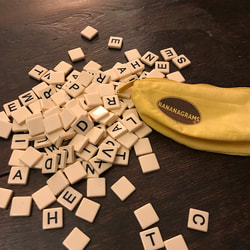
Community of Humanity Blog (2014-2016) Kimberly Burnham, PhD
Published in over 100 books, Kimberly Burnham is a writer, poet, and complementary medicine practitioner. She authored Awakenings: Peace Dictionary, Language and the Mind, a Daily Brain Health Program for people interested in improving their brain clarity, creativity and muscle movements. Her current project focuses on color words, the brain and vision health designed to assist people in seeing better. Kimberly's Ph.D. (Integrative Medicine) considered manual therapy techniques (Integrative Manual Therapy, Matrix Energetics, Acupressure, Reiki) and health coaching for people with Parkinson's disease. She is an avid gardener and environmentalist, who bicycled 3000 miles across the U.S. in 2013. Kimberly Burnham is the managing editor of Inner Child Magazine and on the board of The United World Movement for Children. For a brain health coaching phone consultation or an appointment in Spokane, Washington contact Kimberly at https://www.nervewhisperer.solutions/ or email her at [email protected]. Kimberly Burnham, Guest Blogger (2012-2013) at The Catalyzed Leader with J. David Zacko-Smith4/26/2013 5. “The Business of the Brain and Visual Acuity: Do You Have Questions?" in The Catalyzed Leader. "There are some interesting organizational dynamics based on our brain and nervous system function that are currently being applied by David Rock and his coaching staff to work environments and businesses. It can also be applied with positive outcomes to your physical health and eyesight ... ” https://www.nervewhisperer.solutions/peace/the-business-of-the-brain-and-visual-acuity-do-you-have-questions-in-the-catalyzed-leader
4. “Lions, Zebras and Stress Management" in The Catalyzed Leader. "Robert Sapolsky in a fascinating book entitled Why Zebras Don't Get Ulcers, notes that zebras have very stressful lives. There can be droughts with not enough food. There are lions lurching in the bushes. Zebras don't get ulcers because when a lion comes out of the bush, the zebra takes off running. The zebra is either successful or not. But what the zebra does not do is stress over the event. They don't say to themselves, "why are lions always coming after me? Why did I go to that watering hole? I knew I shouldn't have gone there ... " https://www.nervewhisperer.solutions/peace/lions-zebras-and-stress-management-on-the-catalyzed-leader-blog 3. “The Kaleidoscope Factory" in The Catalyzed Leader . "Imagine a factory where they make kaleidoscopes. What do they need in order to be successful? What needs to be in place so that once they have the customers, the relationships set up and the first order comes in, they are ready to go? What needs to be in place for the kaleidoscopes to be produced and then more importantly enjoyed ... " https://www.nervewhisperer.solutions/peace/the-kaleidoscope-factory-on-the-catalyzed-leader-blog 2. “Lights, Color, Action! The Embodiment of Leadership: Vision & Reality .” by Kimberly Burnham, PhD J. David Zacko-Smith at The Catalyzed Leader Lights, Color, Action! The Embodiment of Leadership: Vision & Reality by Kimberly Burnham, PhD, The Nerve Whisperer Warren G. Bennis said, “Leadership is the capacity to translate vision into reality.” Bennis, founding chairman of the Leadership Institute at the University of Southern California is also chairman of the Center for Public Leadership at Harvard’s Kennedy … https://www.nervewhisperer.solutions/peace/lights-color-action 1. “The Vision in Visionary Leadership” – Kimberly Burnham, PhD (2012 08 25) Posted by J. David Zacko-Smith at The Catalyzed Leader The “Vision” in Visionary Leadership By Kimberly Burnham, PhD The words, “visionary leadership” are frequently bandied about but what do they mean? If we characterize a visionary leader as someone who has vision or foresight, then it is worth considering whether we are talking about physical eyesight — the ability to see the expression on … https://www.nervewhisperer.solutions/peace/the-vision-in-visionary-leadership-on-the-catalyzed-leader-blog [Read more] https://www.nervewhisperer.solutions/peace/category/the-catalyzed-leader-blog The Business of the Brain and Visual Acuity: Do You Have Questions? in The Catalyzed Leader4/25/2013
There are some interesting organizational dynamics based on our brain and nervous system function that are currently being applied by David Rock and his coaching staff to work environments and businesses. It can also be applied with positive outcomes to your physical health and eyesight.
David Rock has written several fascinating books on how our brains either support us to think clearly and have insights or work against our decision making process. He has developed the field of Neuroleadership, an emerging field of study focused on bringing neuroscientific knowledge into the areas of leadership development, management training, change management, education, consulting and coaching. While David Rock doesn't apply his work to physical health. Many of his ideas on interpersonal relationships and productivity can be applied to the community of cells that contribute to your health. For example, used by David Rock at the Neuroleadership Institute, The SCARF model involves five domains of human social experience: Status, Certainty, Autonomy, Relatedness & Respect, and Fairness. Think about an area of your body, which you wish functioned better, was more productive, more efficient, or which supported you to be better able to accomplish your purpose in life. Now consider these questions. You don't need to find all the answers completely for this exercise to have benefit. Just asking the question can have a positive impact because if directs your attention to the areas and through biofeedback mechanisms can improve blood flow and nervous system connection to the area. You can also put one of your hands on the area to further draw your attention to it. Fill in the blank........ What is the status of ______________ in my body as a whole? What can be done to increase the status or how that area feels? For example, What is the status of the liver in my body? Consider for a moment what is status in a physical sense. Someone with higher status often has more resources available. So consider what does the liver need in terms of resources. One thing is blood flow carrying nutrient, especially proteins. So eating better quality protein can increase the status of the liver. Also in Traditional Chinese Medicine, the liver is associated with anger issues. So finding ways to address anger in productive ways increases the status of the liver. Both of these things also increase over all health in the body. In acupuncture the liver meridian, an energetic flow of information, is associated with the eyes and eye health. Is your vision for your business and life being filtered through an angry liver or one with high status? How does certainty or uncertainty in my life affect ___? For example, how does certainty in my life affect my knees? One way to increase certainty for your knees is to always walk on even, level surfaces. That way your knees and legs can be more certain about how they should move and balance. A surprise, an unexpected curb or crack in the sidewalk can throw your balance off and cause a fall. On the other hand a life with no variability is well ..... boring. A different way to increase certainty is to increase the amount of incoming information on which our balance is predicated. If my eyes are good and I can see the curb, then my knees will know how to deal with it, how to adapts or adjust so that my walking is smooth. Wearing shoes that are comfortable and also allow for more information to travel from the point of contact with the ground up to my brain and balance centers also allows me to adjust appropriately as I walk into a hotel ballroom to talk about the importance of vision. Can ______________ do its job in my body in an autonomous way and is it properly supported? For example, Can the lungs do their job in an autonomous way? Obviously, the lungs are surrounded by the rib cage and the neck and shoulder above and the diaphragm below. Compression from any of these areas makes it harder for the lungs to do their job. Also if the liver is adhered (due to trauma or inflammation) to the diaphragm, then every time the diaphragm contracts and relaxes it has to drag the liver along for the ride. Hands-on Myofascial Release by a massage therapists or physical therapist to release restrictions can ensure the autonomy of the lungs. Breathing exercises can also help support lung function as can dealing with the emotions of grief and sadness, often associated in acupuncture with the lungs. How is ______________ related to its neighbors, blood flow in the body, or nutrient flow through the physical self? For example, How is the sacrum related to its neighbors, which include the lumbar spine, hips, colon, uterus / prostate, bladder, etc? Our center of gravity is at the sacrum. It is also the end of the digestive system and the renal (kidney & bladder) system and intimately involved with our reproductive system. The sacrum is the interface between the spine and the legs and between the right and left side of the body. Consider how exercise, eating with intention, or healthy sexual relationships can improve the relationship of the sacrum to the surrounding areas. In an energy medicine approach using chakras, the sacral area is also an area of creativity, of physically manifesting a brain generated ideas into reality. Entrepreneurial expert, Brendon Burchard and psychiatrist, Daniel Amen talk about using the mind to heal the brain. Neuroscience research connects the frontal lobe (your cognitive and voluntary movement center) with creativity and caring. These three can form a triangle of influence. Improving your creativity stimulates cognitive function and your ability to care about the world around you. Doing things to improve your cognitive ability also contributes to a more creative and caring expression. How do I show respect for ________ ? Is it fair how this area is treated? For example, How do I show respect for my heart? Dietary and exercise choices certainly influence how fairly or respectfully the heart is being treated. Doing the things you feel passionate about, the things that call to you and bring you joy (the emotion most associated with the heart) also influence heart health and how each cell in the heart interacts with each other heart cell and with the whole community of cells that make up your body. An Exercise Status, Certainty, Autonomy, Relatedness and Fairness in Our Body Think about an area of your body, which you wish functioned better. More information on the SCARF model can be found at www.your-brain-at-work.com/files/NLJ_SCARFUS.pdf Now consider these questions. You don't need to find all the answers completely for this exercise to have benefit. Just asking the question can have a positive impact because it directs your attention to the areas and through biofeedback mechanisms can improve blood flow and nervous system connection to the area. You can also put one of your hands on the area to further connect with it and draw your attention to it. You can choose to fill in the blank with the eyes, as in What is the status of the eyes? Or with an area of your body experiencing pain or symptoms. Or you can apply this model to your employees and business. 1. What is the status of ______________ in my body as a whole? What can be done to increase the status or how that area feels? 2. How does certainty or uncertainty in my life affect ___? 3. Can ______________ do its job in my body in an autonomous way and is it properly supported? 4. How is ______________ are related to it surrounding neighbors, blood flow in the body, nutrient flow in the body? 5. How do I show respect for __________ of my body? Is it fair how this area is treated? - Originally Published in The Catalyzed Leader Blog.
Kimberly Burnham, PhD
Published in over 100 books, Kimberly Burnham is a writer, poet, and complementary medicine practitioner. She authored Awakenings: Peace Dictionary, Language and the Mind, a Daily Brain Health Program for people interested in improving their brain clarity, creativity and muscle movements. Her current project focuses on color words, the brain and vision health designed to assist people in seeing better. Kimberly's Ph.D. (Integrative Medicine) considered manual therapy techniques (Integrative Manual Therapy, Matrix Energetics, Acupressure, Reiki) and health coaching for people with Parkinson's disease. She is an avid gardener and environmentalist, who bicycled 3000 miles across the U.S. in 2013. Kimberly Burnham is the managing editor of Inner Child Magazine and on the board of The United World Movement for Children. For a brain health coaching phone consultation or an appointment in Spokane, Washington contact Kimberly at https://www.nervewhisperer.solutions/ or email her at [email protected]. |
Medium Blog
Home of the Daily Peace Challenge. Learn about world peace - one word and one language at a time. (c) Kimberly Burnham, 2022 The Meaning of Peace in 10,000 Languages Looking for grant money to complete this peace project Kimberly Burnham, PhD (Integrative Medicine)
860-221-8510 phone and what's app. Skype: Kimberly Burnham (Spokane, Washington) [email protected] Author of Awakenings, Peace Dictionary, Language and the Mind, a Daily Brain Health and P as in Peace, Paix and Perdamiam: an Inner Peace Journal To Stimulate The Brain Kimberly Burnham, The Nerve Whisperer, Brain Health Expert, Professional Health Coach for people with Alzheimer's disease, Memory Issues, Parkinson's disease, Chronic Pain, Huntington's Ataxia, Multiple Sclerosis, Keratoconus, Macular Degeneration, Diabetic Neuropathy, Traumatic Brain Injuries, Spinal Cord Injuries, Brain Health Coaching ... Contact Kimberly Burnham in Spokane Washington (860) 221-8510 [email protected]. Chat with Kimberly about Parkinson's, Poetry or other Brain related issues.
Not Taking Advantage of Your Amazon Author's page?
Kimberly Burnham helps authors get their books out into the world more broadly by improving their free Amazon Author's page and book pages, posting a book review on her blog and on her LinkedIn Pulse blog (over 12,000 followers) Promotion packages start at $50. Contact her at [email protected]. See her Amazon Author's Page. See her list of publications including her latest book of brain health meditations, Awakenings: Peace Dictionary, Language and the Mind, a Daily Brain Health Program. 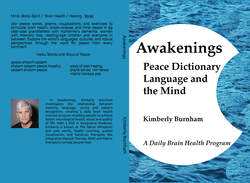 Look Inside on Amazon Look Inside on Amazon
Now Available: AwakeningsPlease share and write a review on Amazon.
Poet-In-Residence Position
I am looking for guest blog opportunities and a position as poet-in-residence. My current project is writing dictionary poems using words in different languages for the English word "peace." You can read some of my poems on Poemhunter . As poet-in-residence I would write poems on different words in different languages and broadcast them throughout the social media blogosphere. Each poem would link back to your site where the word or language appeared. I would expect some sort of stipend and a six month to one year placement. Please contact me for details if your organization is interested in having a poet-in-residence to help get your message out. [email protected] Buy the print or eBook, review Awakenings then contact Kimberly for a free 20 minute brain health consultation. Email or Phone
(Regular rates $120 per hour or 10 sessions for $650.) (Integrative Medicine)
|
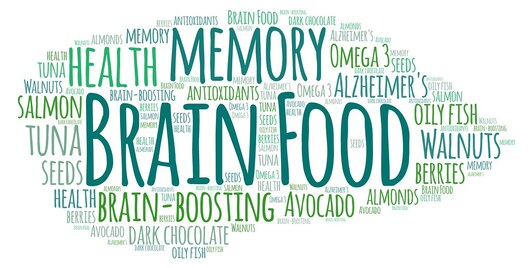
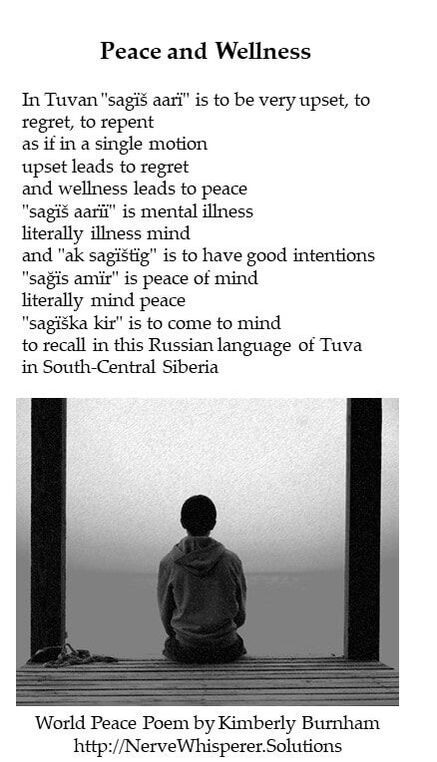
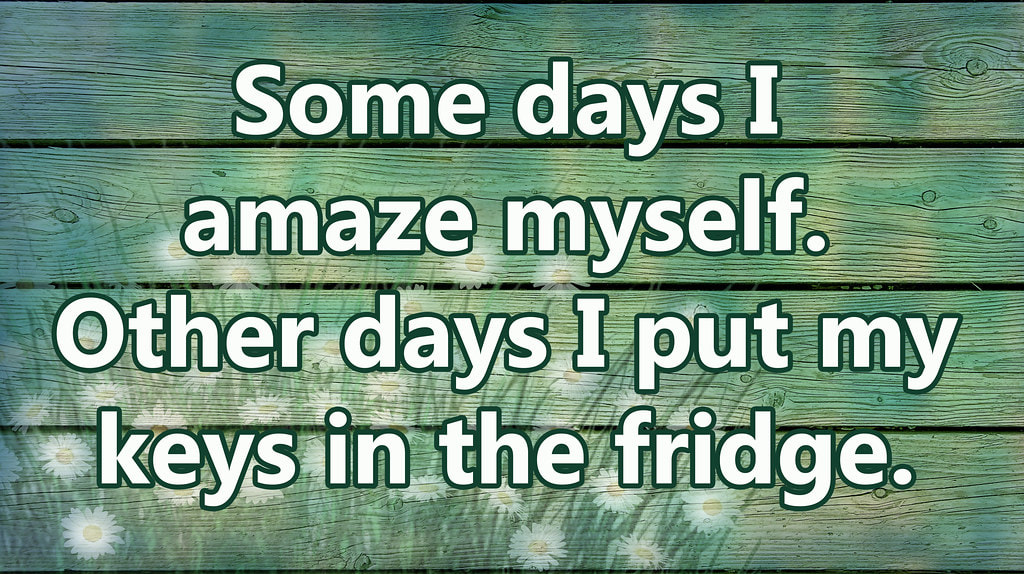
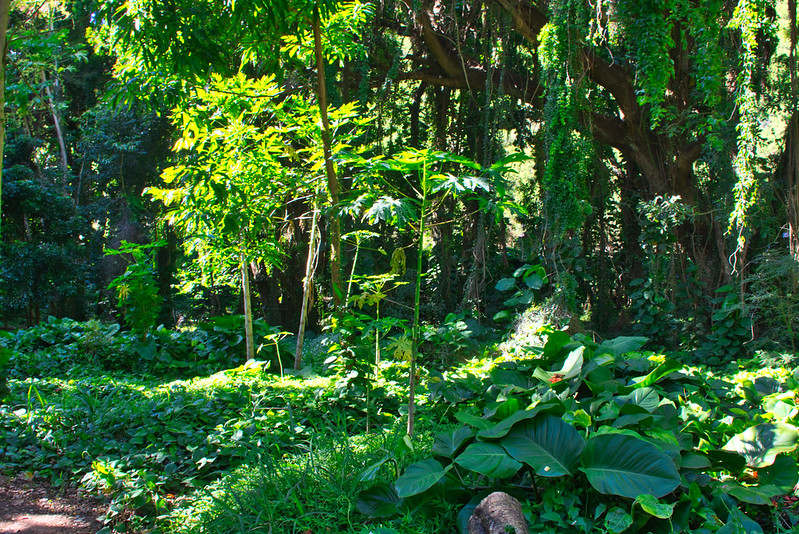
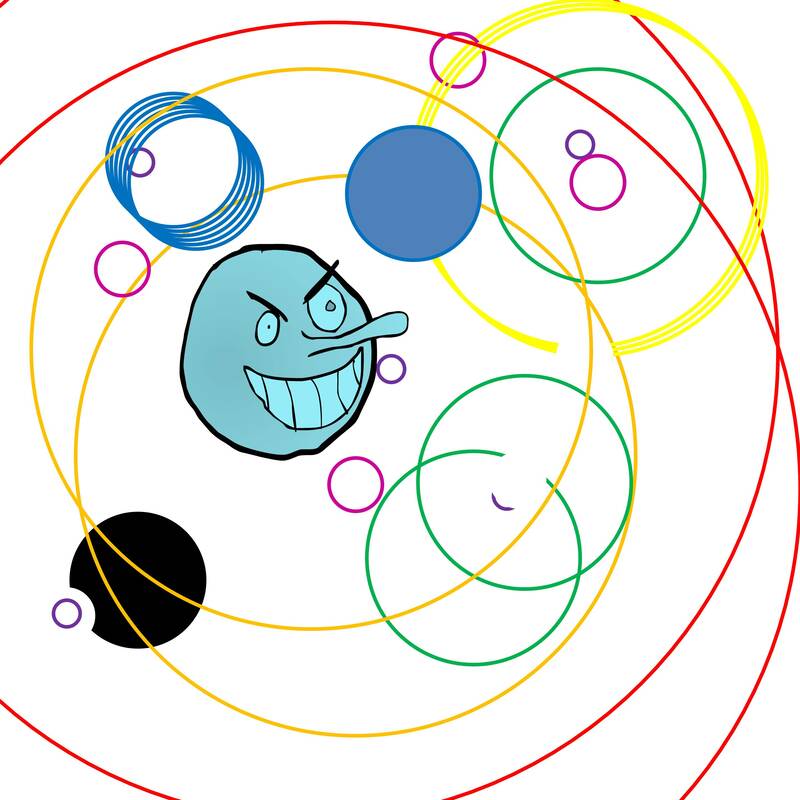
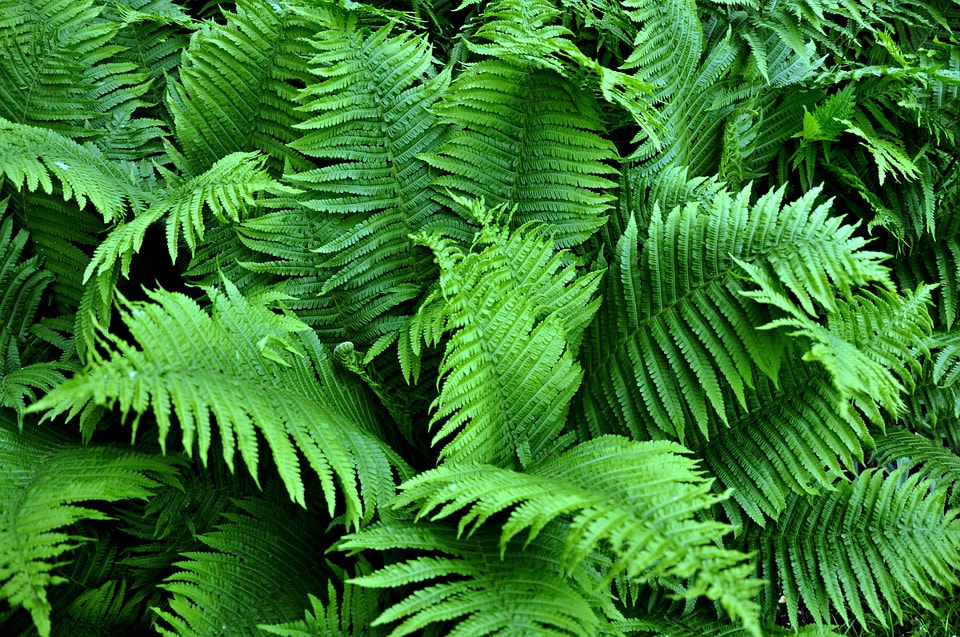
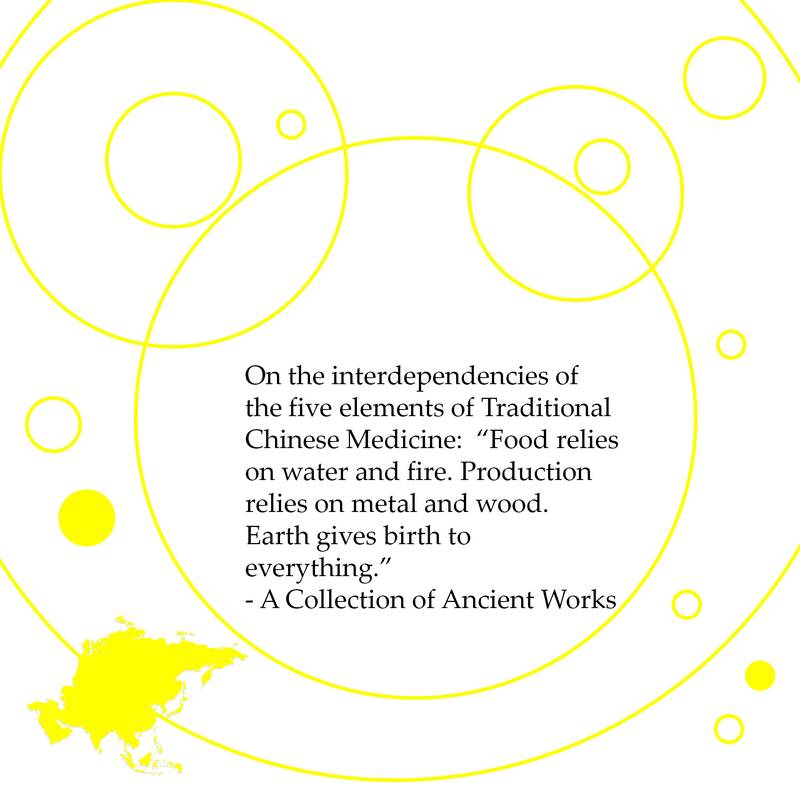

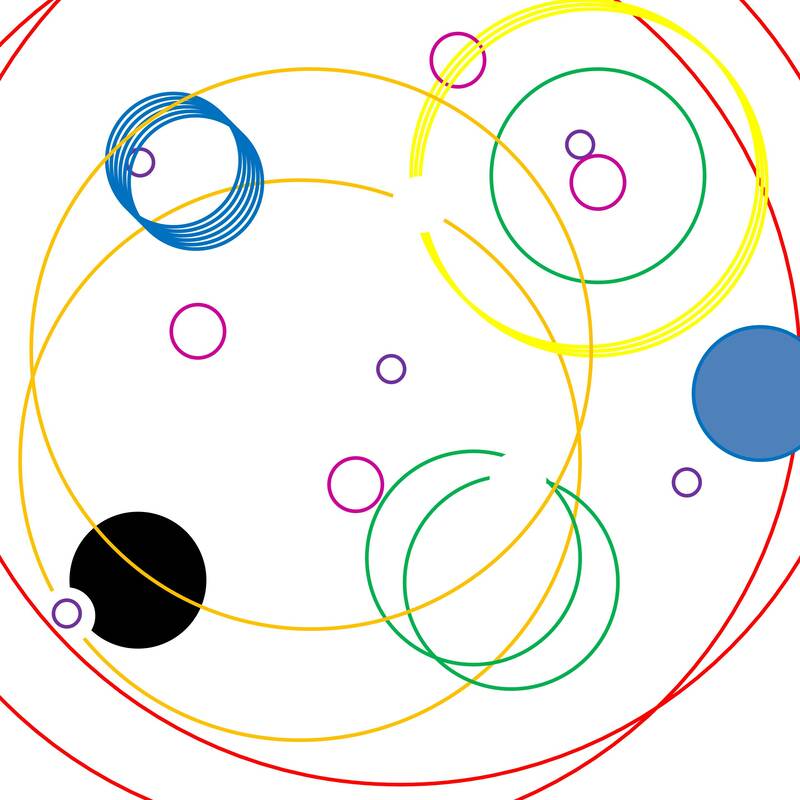
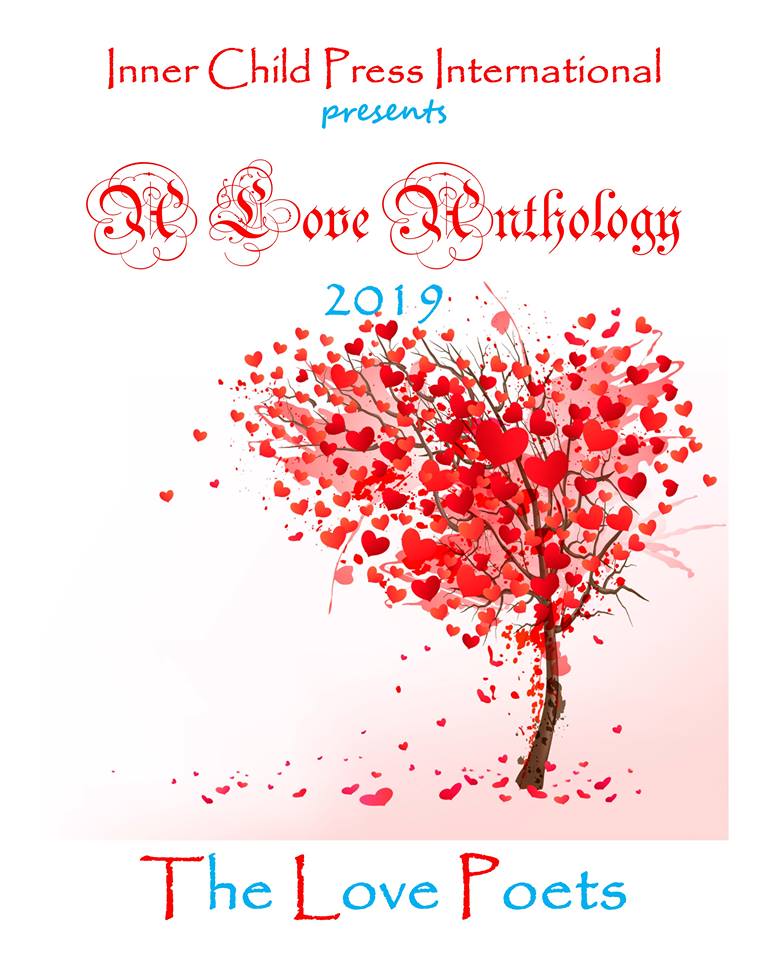

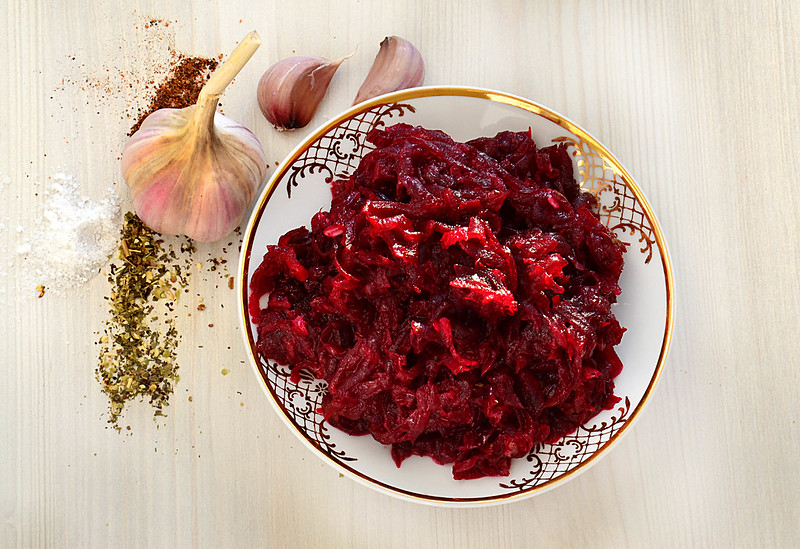
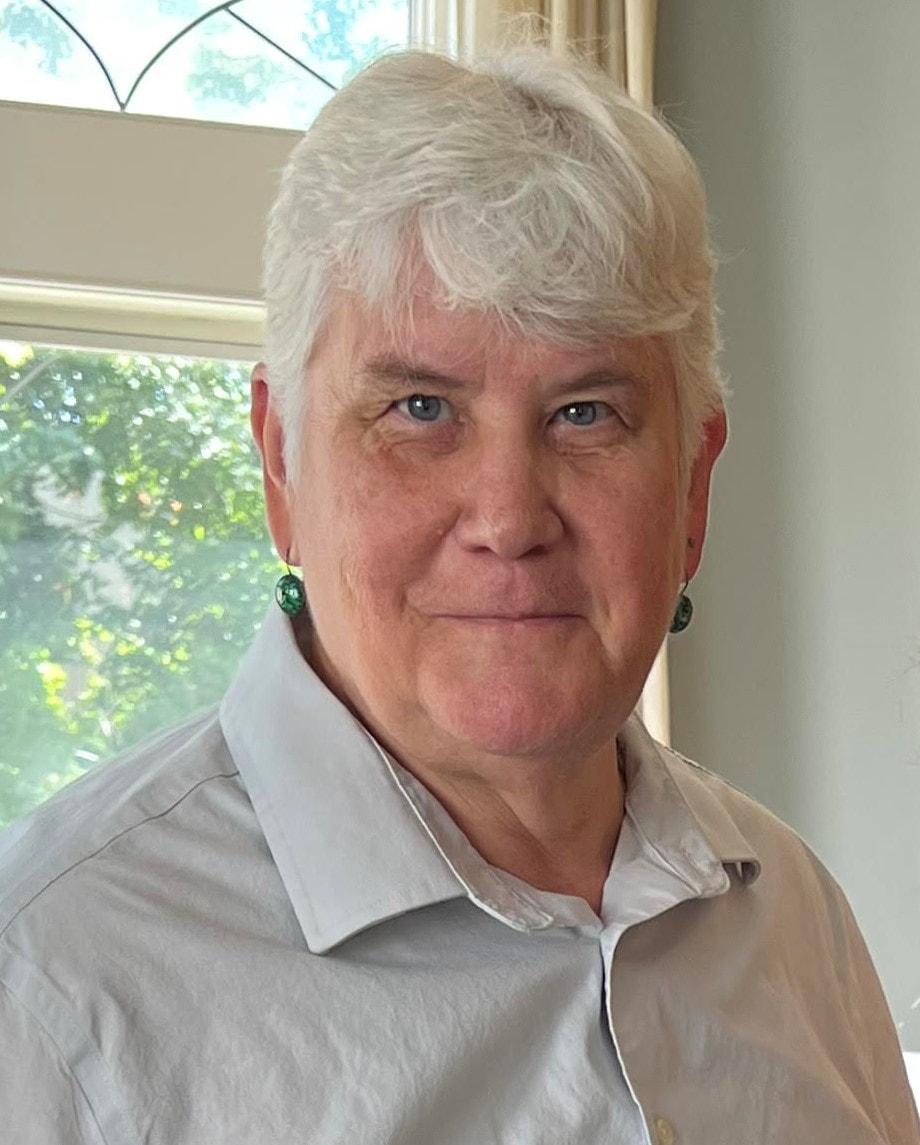
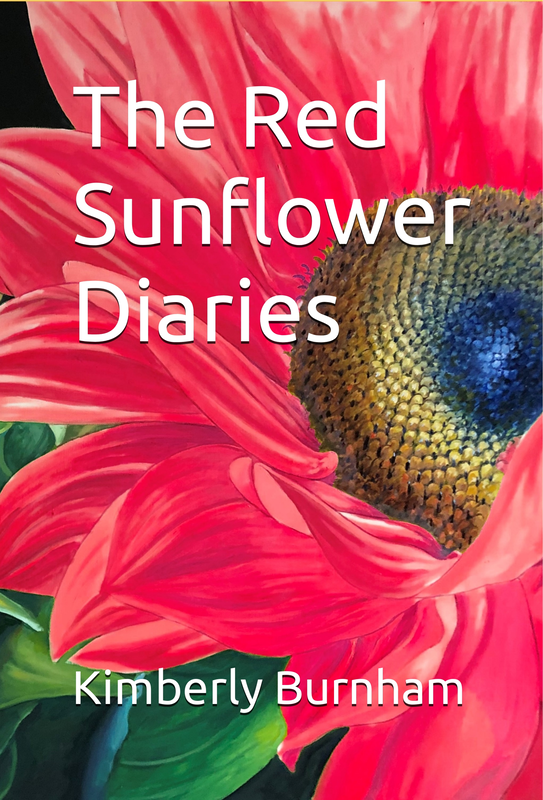

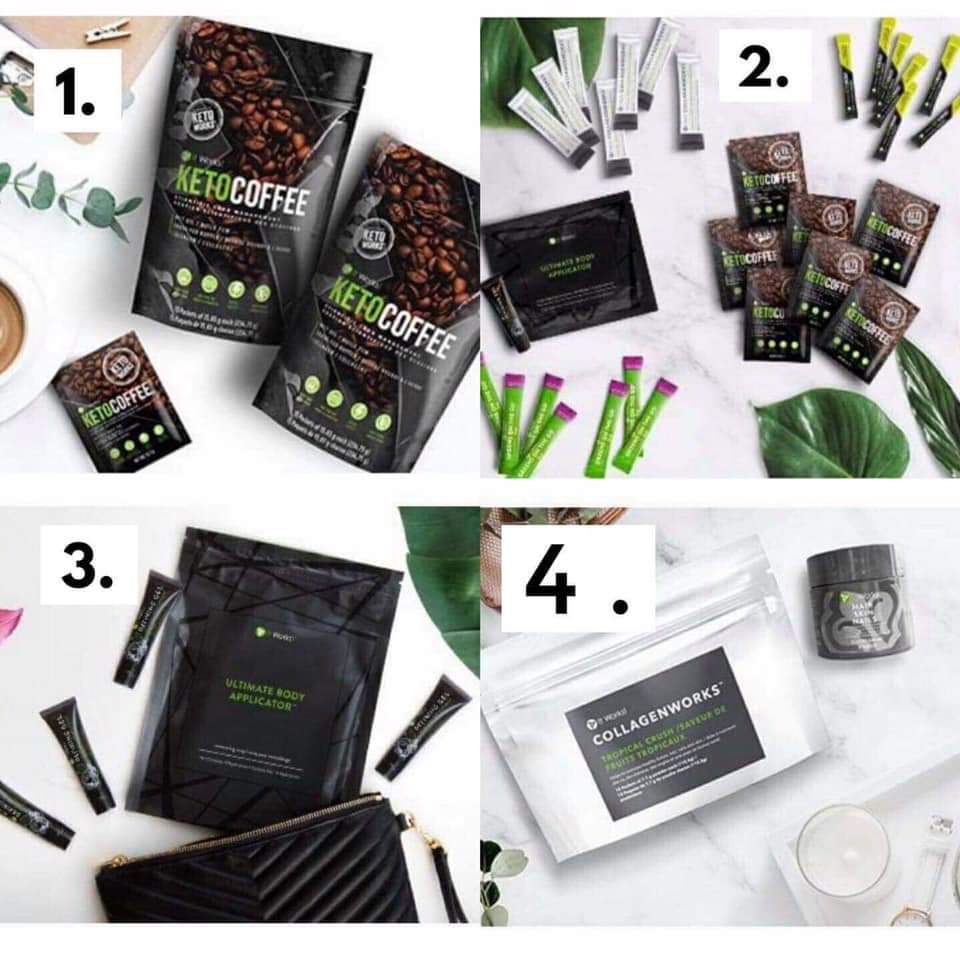
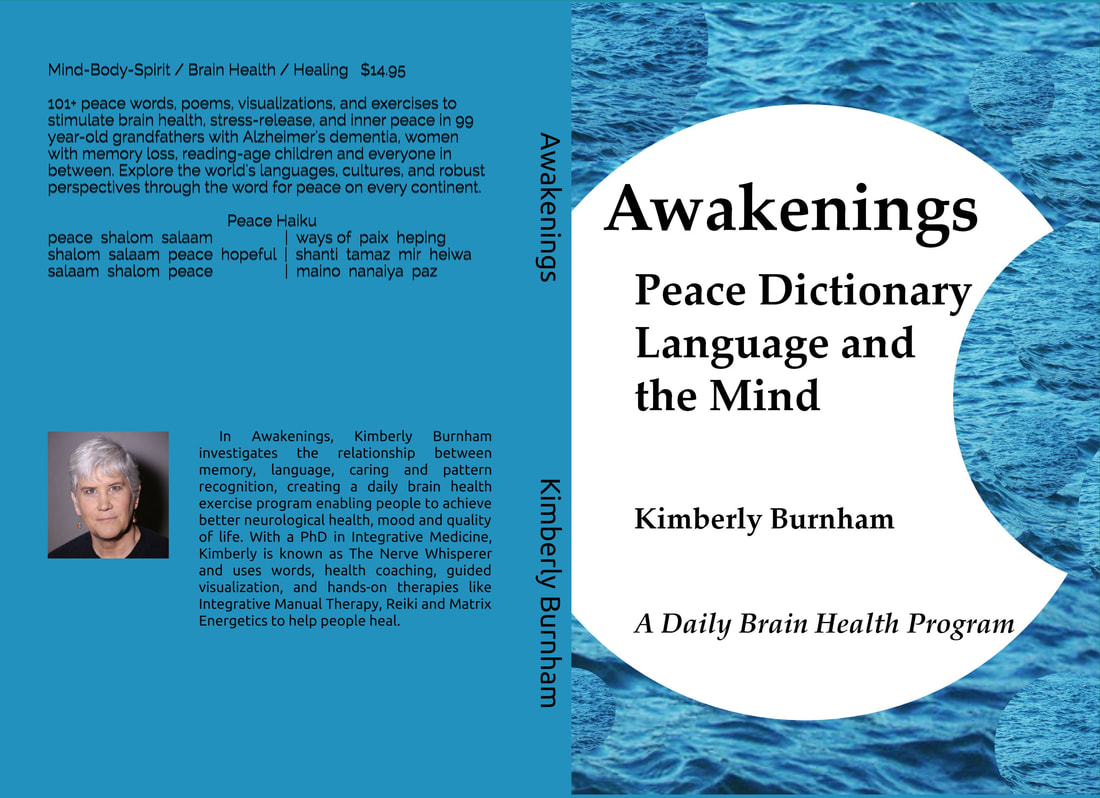
 RSS Feed
RSS Feed
